If you would like a printed copy of any of our back issues, then they can be purchased on Farm Marketplace. You can also download the PDFs or read online from links below.
-
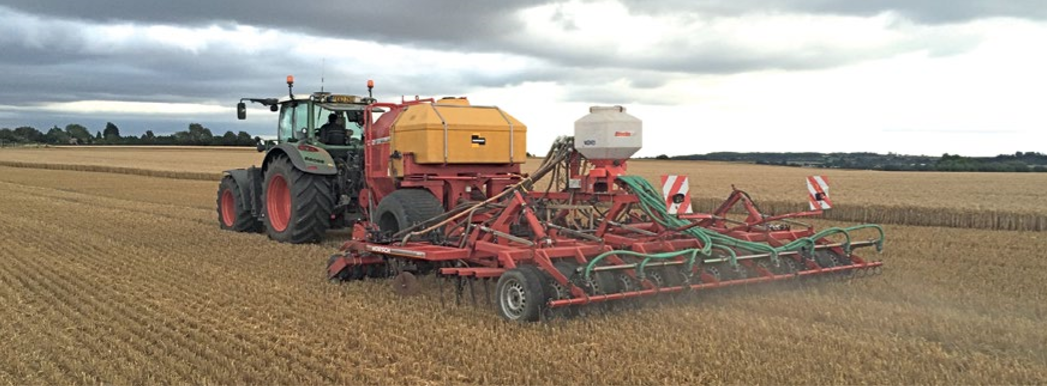
How To Start Drilling For £8K
Clive Bailye’s seed drill of choice is his 6m John Deere 750A , which has been used exclusively for 3-4 seasons. Last year, with an increased acreage, the founder and publisher of this Direct Driller magazine thought a second seed drill was necessary. Having just the one machine was a risk and in a difficult season would mean drilling was delayed. He looked around and found a good condition Horsch CO6 tine drill advertised in Germany.
Words and pictures by Mike Donovan
After delivery he rebuilt the coulters to a narrow profile so as to reduce soil disturbance. He says the tine drill is very useful driling after straw crops such as osr and also through the straw on second crop cereals.
Buying the drill from a German farmer was not particularly complicated, and provided him with a higher spec machine than Horsh sell in the UK. The seed dart tyres are much wider, and the machine is fitted with blockage monitors as well as full width front packers and also a liquid fert application system.
A sheaf of photos were taken, and Clive then asked for some of specific parts to show wear. The deal was done at under £5,000 which Clive says is the market value of these machines which are too large for small farmers to buy. Original owners like to buy new and sell when the machine is still in good condition.
Narrow tines with wear tiles
@Clive knew he wanted to make changes, substituting the Horsch tines and coulters for something far narrower, and has ended up getting his own design of tine made, which has a wear tile made from Ferobide, far harder than tungsten. The drill is on the farm primarily for osr and 2nd crop cereals drilled into chopped straw and the 25cm spacing is okay for these crops.
Comments on Clive’s on-line forum, TFF, said the drill many not be so good with beans, as the slot is a mere 12mm wide. And in barley the spacing may well be too wide as it needs to be thick. Clive points out that the seed pipe can actually be a bit wider than 12mm as it is in the shadow of the point. It would be good to have the option of using it for beans.

Above left: The cheap CO6 is being calibrated ready for its first outing

Above right: The adapted Horsch is being filled by the home built drill logistics trailer with seed and liquid starter fert.
Getting around the German instructions
The Horsch came, of course, with a control box and instructions in German. More on-line discussion revealed that English instructions were available on the Horsch website, and another explained that Horsch was sourcing some of these parts from Agton in Canada anyway. Zealman from New Zealand explained that the button marked with callipers should be held down for around 5 seconds. The menu is where you adjust the tramline sequence, valve layout and row numbers.
Ball hitch is a continental standard and provides a positive connection between tractor and drill

The Stocks Wizard has a rotor modified for Avadex which otherwise leaks everywhere
A Stocks Wizard is on the back of the drill and used for Avadex. Here again the knowledge of actual farmers is helpful. Alistair Nelson warned that the rotor and the surrounding shroud need to be changed, and he got good advice “from Rick at Stocks”. Clive has the same setup on the 750A and says that the Avadex leaks everywhere unless the modification is made. The drill was acquired and modified in 2016 and the results have been excellent.
The machine went through the residue without many problems and having the second drill has meant more timely planting. Clive has shown that moving into No-Till is not the expensive exercise so many farmers think it might be. The total cost, after modifications which included replacing all tines and coulters, was under £8,000.
Author Mike Donovan writes: we have featured a number of home made direct drills in @Practical Farm Ideas, and are always interested in seeing more. Please contact mike editor@farmideas.co.uk or 07778877514.
-
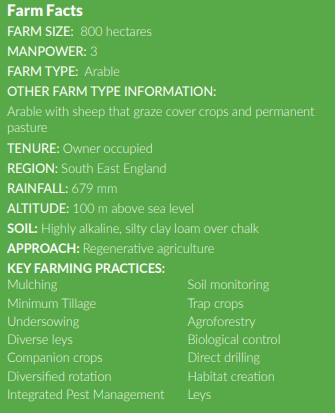
Featured Farmer – Julian Gold


• Julian Gold is farm manager of 800 hectares of Hendred Estate in Oxfordshire on the edge of the Berkshire Downs. The farm typically has a high pH (8.2) silty clay loam over chalk soil and a 6-year rotation of oil seed rape (OSR), winter wheat, spring barley, spring or winter beans, winter wheat, winter barley or second wheat, then back to OSR. There is a small area of permanent pasture and a sheep flock graze the cover crops.
• He talks about motivations – how he transitioned from “the industrial bandwagon” of piling inputs into crops, lots of fertilisers, lots of chemicals, and being part of the problem, to being part of the solution – and farming in a way that is less harmful to the environment and biodiversity.
• He outlines his soil health and carbon capture strategy; explaining his primary aim is to grow big high yielding crops that are photosynthesising hard and to also grow cover crops wherever possible between winter and spring crops to try and keep root exudates. He tries to do reduced or no till (and direct drill) whenever he can – to minimise cultivations, and to return all the crop residues where possible. He also runs a 10m controlled traffic system which has reduced trafficking of the soil to 20%.
• He describes his multi species cover crops, how he manages them (including using sheep to graze them), and how he manages straw residues.
• He also describes his trialling of biological methods of pest control to build ecological processes on the farm and reduce his input bill. He talks about his involvement with ASSIST (a large research project with the Centre for Ecology and Hydrology looking at beneficial insects on-farm), where he has been growing flowering strips down the middle of fields (90m apart), and mentions some of the main benefits he has observed.
• He refers to the ways in which he wants to build on reducing nitrogen (N) use; including using under stories of clovers and yellow trefoil, and companion cropping.
• He talks about the impact of what consumers want on agroecological farming practices – and the importance of having a product you can get a premium for.
• Finally, he describes his perfect vision of a farming system and how he would like to see his farm, or the way that he farms, develop in the future. “If UK agriculture is going to reduce its carbon footprint to zero by 2040 (which is what the NFU wants to do), we can’t do that without reducing N fertiliser substantially.”
Interview with Julian

Janie Caldbeck spoke with Julian Gold, farm manager of Hendred Estate in Oxfordshire, as part of the Agricology farmer profile and podcast series (recorded in July 2020)
Please could you introduce the farm – what you farm and your general farming system and overall approach?
I manage the Hendred Estate which is about 800 hectares of farmable land, mainly combinable crops. We have a small area of permanent pasture and run a small sheep flock, we also graze on cover crops in the arable area, and we run a shoot for the Estate. The farm is on the edge of the Berkshire Downs, and it’s very high pH soil; 8.2 silty clay loam over chalk. We’re in a bit of a rain shadow so we tend to have very dry springs and summers. We practice a six-year rotation at the moment, which I had thought was a nice fantastic, diverse wide rotation but I’m increasingly thinking it’s needs to be way wider and way more diverse. We start with oilseed rape (OSR) and then it goes onto winter wheat, then spring barley, then spring or winter beans, back to winter wheat, and then winter barley or second wheat, and back to OSR.
We do get flea beetle problems but not as bad as some people. The rotation seems quite wide and ecologically friendly, but I think that it needs to be much more diverse and much more random. At the moment we tend to work backwards from the grain storage – so I have big grain stores with big bays, they hold 1200 tonnes of crop each and I tend to have big blocks of set amounts of crop each year. But what I feel is that from an agroecological point of view, I need to plant crops in a random way to help confuse the pests and diseases, particularly the black grass. It really relies on us having much more grain storage and smaller compartments so I can fit random crops in, that’s what we’re working towards.
Can you give an example of typical yields?
My rolling 5-year average is wheat is about 11 tonnes to the hectare, OSR is about 3.7 tonnes to the hectare, winter barley about 8, spring barley about 7. Bean yields are quite low, we really struggle with beans, particularly with our dry springs, they are probably in the high 2s, low 3s.
How did you enter the farming sector and why is sustainable farming using agroecological practices
important to you?I grew up on a small farm in the Midlands which has got Grade 1 soil, it’s the only patch of Garde 1 land in Warwickshire. So I was on a farm with exceptionally high quality soil, and I didn’t realise that you could get soil in other places which wasn’t as good as ours until I started working in different places. I went to Australia between A-levels and college, and worked on a terrible, terrible farm in western Australia which should never have been cropped. Then I went to Harper Adams to do a HND. During my time at Harper Adams I went back to Australia and worked on another terrible farm which should never have been cropped. And then I worked on a root farm in East Anglia where they’d completely destroyed their soils with excessive cultivations and sugar beet potatoes. I left college, worked at home for a while, and then got a job with Sentry Farming in managing farms, so again worked on various farms over a short period of time, all with big soil issues.
From an agroecology point of view, the soil was the big thing that hit me first… I realised that there was soil and there was soil, not all soil was the same. Ever since my teens I’ve had this focus on trying to promote soil health, that has been my big driver for years. But apart from soil, I was still stuck on what I call the ‘industrial agricultural band wagon’ of piling inputs into my crops and lots of fertilisers, lots of chemicals, and I was part of the problem rather than part of the solution from the point of view of destroying the environment and harming biodiversity and insect life.
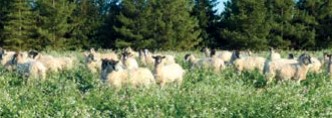
About 10 years ago I got a beehive, and again that was another big mindset change – suddenly my insecticide spraying wasn’t just damaging some ephemeral bees that were just ‘out there’ in nature, I was damaging my own bees. And when it becomes up close and personal, I think it’s really interesting because that can then trigger a mindset change. I really started to think about biodiversity, insect life, pollinators – about the wider ecosystem I was working in rather than just soil health. Over the last 10 years I’ve been really focusing hard on soil health and the wider ecosystem.
I have an analogy I use that sort of sums up my thoughts really – it’s this fact that industrial agriculture has been sabotaging its own factory premises. If you think of an analogy with a manufacturing industry like a car manufacturer, they have a production line producing cars which is generating their profit, but they also have a factory premises to maintain – which they do so out of their profits. But I think industrial agriculture for too long has concentrated on the production line, which is the food production. And if you see our factory premises as the ecosystem that we’re operating in, we haven’t been diverting money into maintaining the factory premises. Part of that is because there hasn’t been enough profitability in farming.
It’s not necessarily the farmer’s fault, but I’m really focused in now on my farming – as well as producing food and making a profit, I’m trying to maintain my ‘factory premises.’

Moving on to your focus on soil health particularly… I’ve heard you say that before you even start looking at nutrients for crop production (your usual such as hydrogen, phosphorous, potassium), the main nutrient that you focus on is carbon, because you basically need it to feed the soil before you start thinking about anything else. Could you describe your carbon capture strategy on your farm and the different practices that you carry out to do that?
A lot of what I say is to do with my specific farm situation because I’m not a mixed farmer, I haven’t got access to rotational lays or farmyard (FYM) manure. So I see my primary source of carbon as being the atmosphere. I really see myself not as a farmer, more as a photosynthesis facilitator. I basically want to take as much carbon out of the air as I can and put it in my soils. It’s a win-win.
The primary aim is to grow big high yielding crops that are photosynthesising hard and also grow cover crops wherever I can between winter crops and spring crops to try and keep root exudates. When crops are growing, a significant proportion of the products of photosynthesis go below ground as root exudates as well as going into plant growth. I’m trying to harness those root exudates into my soil to feed the soil life and soil biology. But I’m also trying to make sure that I don’t then re-oxidise that out. So we’re trying to do no till and scratch till as much as we can. We don’t want to do deep cultivations, we don’t to put the carbon there using photosynthesis and then go in post-harvest and oxidize the carbon by letting air into the soil with deep cultivations. So we try to minimize cultivations. Because I haven’t got access to a lot of compost and FYM, I return all my crop residues where possible, and that includes spring barley and winter barley straw which is very difficult. We struggle to grow crops behind chopped spring barley and chopped winter barley, but I’m loath to cart carbon off the farm.
And to fit in with all that, particularly the lack of cultivations as well, we run a controlled traffic system. We’ve been running that since 2012, a 10 metre controlled traffic system. So we’re not putting compaction in, we’re only trafficking 20% of our soil surface. We know where those wheelings are and we can take the compaction out on those wheelings if we need to. That enables us to direct drill and scratch till very efficiently because there’s no compaction.
Going back to the cover crops, you’ve mentioned the challenge of dealing with the residue from it. How
have you overcome that?We have challenges with straw residues and challenges with
cover crop residues.The cover crop residue challenge is we’re grazing them mainly with sheep – I grow a few different types of cover crops, my favourite are big, higher biomass, multi-species… So for the sheep now we’re growing multi-species cover crops with things like spring oats, rye, tillage radish, vetches, phacelia, a few stubble turnips, bit of forage rape – six or seven species, and we get those in straight behind harvest. And then from about mid-October time the sheep are grazing through the winter on those cover crops. By the time we get to the spring there isn’t much residue left, we just spray off what there is and then direct drill. I can’t graze certain cover crops in the same way, or I haven’t got enough sheep. So I’m experimenting growing cover crops with lower biomass i.e. spring oats, phacelia… where there’s much less biomass above the surface so it’s easier to deal with in the spring. We have a different range of cover crops depending on the situation. But I’m hoping with the machinery that’s becoming available now to terminate cover crops, that we can increase them as we go forward. If we haven’t got enough sheep to graze on our cover crops we can terminate them mechanically.
Straw residues have been a real issue for us – particularly growing the OSR after chopped winter barley straw. We change our chopper blades regularly, so this is an extra cost. We keep them sharp and change them regularly. We also find that the quality of straw chopping is the first thing that stops us combining in the evenings, when the grain moisture can be quite low still. If the straw chop quality deteriorates we have to stop combining because we know it will impinge on the OSR establishment. We powder our residues as much as we can to dust, combining in the middle of the day and using sharp chopper blades. We do a bit of raking – we have a cheap 10 metre Wyberg which we’ve spaced the tines out on and we use that on a light tractor with low tire pressures, off the control traffic lines, and rake at an angle if we have to. By all those techniques, we’re finding that we’re managing to grow crops in chopped straw, but it is a struggle. If we combine too late in the evening and the chop quality deteriorates, the OSR establishment deteriorates or disappears completely.
Spring barley is an even bigger problem. We have the rotation fixed so that after spring barley we either grow spring beans or winter beans – if we grow winter beans there’s a bit of time for the spring barley to rot down a bit to go through the drill with the winter beans. And also if we have to, we’ll rake at an angle. If we’re going into spring beans, we grow a cover crop behind the chopped spring barley straw. But that’s quite problematic and often components of that cover crop mix will fail, so I tend to put mustard and vetch in the mix – they usually take fine, even if other components of the mix fail.
So you’ve mentioned the challenges, do you have any advice or tips for fellow farmers who might be
interested in applying a similar approach?It’s all about thinking about the whole integrated system – integrating the rotation with the cultivations with the cover cropping and the type of cover cropping… There are going to be problems in some areas, and it’s important to get the machinery right – it doesn’t necessarily have to be expensive – my 10 metre Wyberg cost me about £4,000 and we just took a third of the tines out, re-spacing them – so that’s a cheap straw rake. We’re operating secondhand drills. One thing that I tend to find with conservation agriculture systems and systems where you’re not doing much tillage, is you’re saving a lot of money on diesel and cultivation equipment, time in the field cultivating. But unless you’ve really pushed the boat out and bought something really expensive like a New Zealand Cross Slot, the chances are you’re going to need a couple of drills. I have a Dale drill and a Köckerling drill, both tine drills. They’ll work in different situations – the Köckerling will go through any amount of trash. The Dale drill will direct drill in the spring through a dry crust into wet soil conditions underneath, whereas the Köckerling will make a mess.
If we can go on to talking a bit now about another biggie for you, which is looking at biological methods of pest control. I know you’ve been involved in various trials, and traditionally flower margins are planted round the edges of fields… You’ve been involved in a project that’s trying to put these strips in the middle of fields. What were your motivations for doing this? Please can you describe the system that you’ve been trialing.
The trials are the ASSIST trials, which are government funded, multi-agency funded trials… It’s a five-year trial initially about achieving sustainable cropping solutions, we have various trials on the farm. My motivation for putting biodiversity and the homes of beneficials in the middle of fields is because I feel that historically farmers have used environmental schemes and put margins around the edge of fields. But with a margin around the edge of a big field, you aren’t necessarily going to be able to cut your use of insecticides because beneficials living in the margin aren’t going to go very far into the fields.
Alot of these beneficials i.e. ladybirds and carabid beetles only move up to a certain distance from where they’re living. So the theory is looking at putting homes for beneficials through the middle of fields in strips. In my field they’re 90 metres apart, three tram lines – we’re basically covering the whole field with beneficials. If you have a pest problem in a field, the beneficials can control it for you without you having to resort to insecticides.
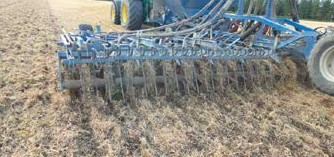
Scientists involved in the trials infected my wheat tiers with aphid colonies, different distances from the wildflower strips, and then analysed to see how far out the ladybirds were going in controlling the aphids. It’s all about not just playing lip service to environmental schemes, which I feel that farmers have tended to do a little bit in the past, but actually making it useful. Can we save ourselves money, can it be much more useful than just a few pretty strips around the edges of big prairie fields?
Up until this point, what would you say are the main
benefits that you’ve observed?A, it makes you feel good. If I’m having a down day and I walk out into my field with strips down the middle of my otherwise sterile, industrial agricultural prairies, and they’re all in flower and full of insect life, it’s just absolutely fantastic. I think a lot of this is mindset change, until you get up close and personal with the things that you can do on your farm and see what’s happening, it’s almost hard to visualise. No farmer that’s visited my strips has come into the field and said, “Oh this is terrible, look at all the wasted land you could be growing wheat on.” They all look at it and say, “Oh isn’t that fantastic!”
So visually they’re great. I think they are starting to work for us – this is anecdotal at the moment because the data hasn’t come back from the scientists. I have three fields in my ASSIST trial. One is business as usual, with no environmental strips round. Treatment two field has got environmental strips around the edge and various other things going on, the third has environmental strips round the edge and strips down the middle of the field. It all went into rape, they all got treated the same. We didn’t actually straw rape them because it was a very dry summer and I was worried about losing moisture for rape establishment. So there’s quite a high concentration of straw, particularly where the combine hadn’t spread it to the full 10 metres perfectly.
The two fields without the strips down the middle have got savage slug damage in the established rape, there are gaps in the field where there is no rape behind the thickest bit of the combine swathes, so strips of rape and strips of bare soil. In the one with the strips down the middle of the field I have 100% rape establishment. The same amount of slug pellets were applied on all of them, so I’m hoping that because I have many more carabid beetles living in that field in the strips, they’ve all come out and eaten the slugs…
Going back to the soil health again, it’d be interesting
to see if there’ll be any benefits in relation to that.Benefits from high soil health are there whether you’ve got the in-field strips or not, because if you can get carbon and you can reduce the tillage and you can get fungal networks working, the mycorrhizal fungi working, you can get all the symbiotic relationships that are supposed to be there but modern industrial agriculture tends to work without… We can hopefully get higher, more robust yields. In these years when we have dry springs, I do find that my yields aren’t hit as hard as they might be, but alot of the benefits of environmentally friendly and high soil health farming are quite hard to actually pin down.
Anecdotally, I’ve been farming enough years to know that there are big benefits from high soil health – soil’s easier to work, it holds its moisture, yields aren’t as affected. When it’s wet it drains through better. Compared to a lot of people last autumn, we were able to do a reasonable amount of drilling. The fields got wet but they dried out quite quickly.
I think the big thing is nutrient availability. Going forward, we really need to work on reducing nitrogen (N) use. As you build soil carbon and have all this nutrient retention in the organic matter and all the soil biology cycling it, the mycorrhizal fungi bringing phosphorus in, the organic N that can be mineralised for the crop… if we can start cutting down our N fertilizer and letting the soil feed the crop like it’s supposed to, we can save money on fertiliser and help minimise the environmental damage that we do with N fertiliser with its carbon footprint and its emissions… Again, it’s a win-win deal.
We’re doing a bit of companion cropping and playing about with legume understories. We’ve established some clover, but we’ve used yellow trefoil, which is too vigorous. We’re trying to see if we can maintain it in the rotation and direct all the crops into it. This year that trial has got spring beans into yellow trefoil, and yellow trefoil is massively out-competing the spring beans. So I’ve got to go back to a small seeded white clover which isn’t as competitive but it is harder to establish under an arable crop.
Last year I drilled spring oats into an established winter bean crop, then we harvested them and separated them in the cleaner. This year we’ve planted a big two hectare, 30 metre-wide strip of alternate rows, spring beans and spring oats drilled in the same field. The rest of the field is spring beans, and the field next door to it is just spring oats. It’s a relatively good experiment because they’re the same soil type. We’re hoping the beans will give the oats N, and the two crops together will help cut down the pests and diseases, the oats will get less crown rust, the beans will get less chocolate spot, and the black bean aphid will be slowed down a bit….
What economic benefits or cost savings have you experienced from farming in the way that you do?
The controlled traffic system has given us savings that are tangible. My frontline tractor with our old system used to do about 850 hours a year, and we do about 400 – 450 hours a year with it now. Time in the field is dramatically reduced. So there are fuel and machinery savings… Obviously the machinery lasts much longer if it’s doing half the work so there are tangible savings from working wide, shallow, no till.
I did an economic trial last year but unless you’re doing replicated trials, I’m loathe to put misleading information out there into the public domain…but my gut feel is that the agroecological system I trialled made me more money. Unfortunately N is the whole driver, it drives the speed of the hamster wheel. If you’re putting a lot of fertiliser, a lot of N on, it’s driving disease which you then need a lot of fungicide for and you’re killing the good guys as well – you need growth regulators to keep it standing up. You’re feeding the weeds as well, so you need herbicides, and you’re spending a lot of money on the N, it’s driving all your other costs. But if we can back off with the N, the crop can get its N much more slowly from soil organic N that’s been mineralised slowly.
A lot of crops varieties have been designed for industroagricultural systems, they don’t necessarily root very well. They’re designed to yield really well with a lot of fertiliser inputs, and they haven’t necessarily got the best disease profiles. That’s in contrast to agroecological type farming where we’re putting less N on and we want crops with big root systems which will explore the soil profile and that’ll have symbiotic relationships with the soil life. How do we know with some of these modern varieties that they haven’t bred out their ability to have symbiotic relationships? Maybe they just don’t interact in the same way?
It’s about having the right varieties and the right crops to be able to feed themselves from the soil. The hamster wheel just needs slowing down. And I suspect if we slowed the hamster wheel down we’ll find it’s a win-win – farmers will have nicer farming systems, the planet will be healthier, bank balances will probably be better or maybe not much worse, and the consumers will have healthier food which won’t have such a chemical cocktail of residues in it and will be more nutritious.
How would you like to see your farm or the way that
you farm develop in the future?If UK agriculture is going to reduce its carbon footprint to zero by 2040, we can’t do that without reducing N fertiliser substantially. The use has to go down somehow, and that’s what I’m working hard on. It’s difficult growing winter wheat if it is your main cash crop, it’s difficult to make big inroads into N reductions. I would like to move towards almost all spring cropping in an ideal world – if I could get my overheads low enough to withstand the lower gross margins… Moving to all spring cropping so that I’ve got cover crops virtually on my whole acreage through the winter, big high biomass cover crops… So with lots of legumes, lots of biodiversity in the different lengths of rooting systems, exploring the root profile, hoovering up nutrients and putting them into the cover crop biomass ready for the spring crop. It would involve destroying cover crops either mechanically or with sheep and livestock, and then planting spring crops, spring beans, spring barley, spring oats, even spring wheat, that require much lower N inputs, my overall use of N would dramatically reduce. My environmental footprint, carbon footprint, would be massively reduced from a carbon point of view. The sequestration be up, and the emissions would be down because of the lack of N fertilizer and the extra cover crops growing everywhere.
The perfect vision of a farming system for me would be all spring crops, the whole farm growing high biomass multispecies cover crops, stock rotating round the farm, mob grazing cover crops, and with a lot of environmental strips in all the fields – a regenerative agricultural system which isn’t organic but is a long way away from our industrial farming systems that a lot of people have been operating until recently. The six million dollar question is… I’m a farm manager, not a farm owner, so can I sell this vision to our owners? And can we reduce our fixed costs low enough, our big overheads, our labour and machinery to be able to withstand a lower output system?
Visit the Agricology website www.agricology.co.uk to view the full farmer profile and listen to the podcast. Agricology is an independent collaboration of over 40 of the UK’s leading farming organisations sharing ideas on sustainable farming practices. We feature farmers working with natural processes to enhance their farming system and share the latest scientific learnings on agroecology with the farming community from our network of researchers. Subscribe to the newsletter or follow us on social media @agricology to keep up to date and share your questions and experiences with the Agricology community.
-

Featured Farmer – Ed Reynolds


When I started farming there were two choices: conventional and organic. We were conventional. Organic just seemed out of the question, too bigger a leap on the heavy land we farm without livestock. I found neither of these provided me with that sense of fulfilment. I have always been an advocate for planting hedges, introducing trees, awareness of catchments and pollution – all things connected to working with the natural environment. However, I wanted to use (and appreciated) pesticides, when used in the right place at the right time. Farming in a way which delivers other benefits, not solely economic returns, has been what I was looking for. There is nothing exceptional about our farm. We are a 327ha arable farm in west Cambridgeshire growing combinable crops on clay. There is, however, something remarkable going on underneath our feet. Every moment of every day, flora and fauna are interacting in ways too numerous for us to comprehend, for the benefit of our farm. And to encourage this, I have to do things differently.
I instinctively knew Regen Ag was an opportunity I wanted to grasp, from those first few ‘alternative’ talks and working demonstrations I had seen during early 2010’s. I knew this because I began to grasp the concept that soil functions by itself, in cycles. This was revolutionary as I had come from a traditional, heavy cultivation regime, with little thought for the soil. A traditional focus is on the surface, how things look from above. Regen Ag presented an alternative: looking at the whole system. In 2016 I started to farm in a way that works with the natural systems, and attempted to use nature to help address some of the problems ‘bag and can’ farming had created. Turns out my first attempt was a failure as whilst I had the enthusiasm, I didn’t prioritise information, in this case, about soil structure. And so on to the next year, this time armed with a soil consultant. We are now 5 years into a graduated transition, and the results, both anecdotal and empirical give me great confidence that we are on a better path. What is more, the fun has come back to farming.

We run a 6 year rotation including W wheat, S barley, peas, oilseed rape, linseed and oats. We strive to grow multi species catch and cover crops, assuming we have a minimum 5-week gap between cash crops. I dig soil pits to check for problems during the summer and run a no-till establishment policy, with some exceptions based on soil structure data. Our soil is Hanslope and Evesham series clay – 40% Clay, 37% Silt, 23% Sand. Although it is heavy soil, it has a high calcium content and has adapted to direct drilling better that I could have ever expected. The way in which it self-structures is remarkable, trafficability has improved and we do not get those sunken wheelings from harvest traffic during wet summers.
One big win for us as a ‘smaller’ farmer is to keep axle weights down. Regenerative Agriculture does not require much horsepower, we have been able to employ a 6t 150hp tractor for many operations and an 8ton 200hp tractor for crimper rolling / drilling. Lighter axle loads mean you are less likely to cause compaction, that leads to patchy crop establishment, weeds and problems down the line.
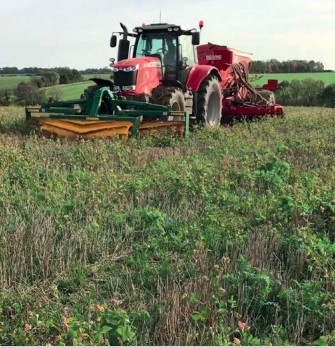
Residue management has been an area that we have grappled with. It took a while to understand that to establish a cashcrop in high residue situations, baling the straw has benefits. I have learnt to be pragmatic – you sometimes break one rule in order to achieve a successful cropping outcome. Ultimately, I hope that our worm populations and shredders will continue to build to a point where high C:N ration crop residue is pulled down and consumed, but we am not quite there yet. We have a disc drill and I am aware that hair-pinning will reduce my establishment % and may lead to residual herbicide washdown and damage.
In autumn 2019 I found direct drilling 2nd wheat seed into wheat stubble with chopped straw challenging. In some fields, the aggregation and structure was not yet there, meaning the moisture sat in the top 3 inches, causing smearing, compaction and anaerobic conditions. I saw blue mould and slugs attack the seed, leading to a stand of 112plant/m2 in February. The decision was made to keep the crop, and that year (2020) the direct drilled 2nd wheats only yielded 6.4t/ha. This decision was won over by the lack of weeds present, a great benefit of direct drilling and using a low disturbance opener.
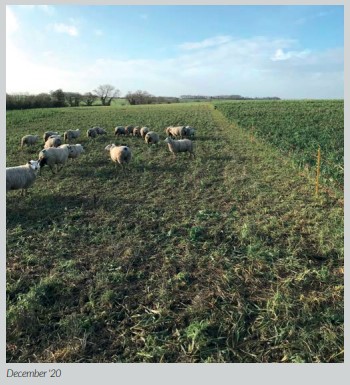
Conversely, during spring 2021, spring oats establishment benefitted from chopped straw on the surface, along with a 5 way cover crop that was grazed by an over winter flock of ewe lambs. The straw acted like a mulch and prevented drying out and the opening of the slot during the dry April, just enough to allow germination, and the roots to find moisture. These milling oats went on to yield 6.0t/ha, 52kg/hl specific weight.
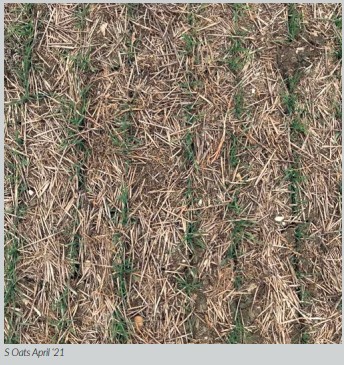
I have found that in this transition phase, mole draining and ditch maintenance has been key to our progression. A good mole may last for 10 years, and I hope that in time we may come to rely on mole draining less as our natural soil aggregation continues to improve. Our first attempt at intercropping involved a crop of spring barley (50% seed rate) and peas (at 70% seed rate) in the same rows. The purpose of this was to try and address one of the 5 principles of Regen Ag – try to achieve diversity, to the benefit of soil microbes. This 5ha trial started well, but ended with the barley outcompeting the peas at GS39, coming to a 5.4t/ha spring barley yield and virtually no peas. This was not a complete failure as it achieved this yield on near zero N to the crop.

Artificial nitrogen fertiliser is an area we are trying to reduce, and rates for all crops are down 15% over 4 years. I have found this needs to be done carefully, as yields can be affected if done too fast or without a holistic view. I hope to partially move to foliar fertilisers to reduce this further in the short term, and who knows where intercropping can take us in the long term.
The adoption of this new way of farming has meant relearning our trade and being open to new ideas. There have certainly been risks and pitfalls associated with the adoption of Regen Ag for us, but by taking a chance and managing the risks as best you can, so far the outcomes have been well worth it.
-
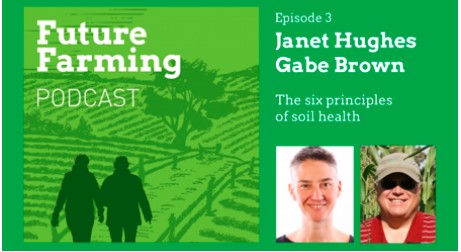
DEFRA: In Conversation With A Soil Health Pioneer
Future Farming Podcast – Janet Hughes and The Team
Introduction
From the series of Future Farming podcasts, in this one Janet Hughes has chosen to talk to Gabe Brown.
A familiar name with our readers (his name featuring in about half our issues of Direct Driller), Gabe has been named one of the twenty-five most influential agricultural leaders in the United States. He farms at Brown’s Ranch, a diversified 5,000 acre farm and ranch in North Dakota, with his wife Shelly and son Paul. He is one of the pioneers of the soil health movement. His book, “Dirt to Soil, One Family’s Journey Into Regenerative Agriculture.” Was featured in our recommended reading and has been quoted by many farmers on here, including Tom Sewell and Tom Chapman. If you haven’t read the book, it well worth a few hours of your time to understand how Gabe and Paul run their operation and how they have got to where they are today.
Gabe is also a partner in the regenerative farming consultancy Understanding Ag and an instructor for the Soil Health Academy, which teaches the power and importance of healthy functioning ecosystems. In this Podcast, Janet and Gabe talk about education in farming, shortening the supply chain and the six principles of soil health. Those who have read “Dirt to Soil” will realise he has added another one to the 5 mentioned in the book.
Janet Hughes: Hello everyone and welcome to episode three of the Future Farming podcast, which is the podcast of the Future Farming programme here in Defra, where we share the fascinating conversations that we have as part of the programme with everyone who’s interested in what we’re doing. And today I have the great pleasure of welcoming to the podcast Gabe Brown, author of Dirt to Soil, North Dakota farmer and leading regenerative agriculture practitioner, who’s going to share with us today some of his insights about the journey he’s been on and the lessons he’s learned, and what we can learn more broadly from what he’s doing.

Gabe Brown: I’m so excited about the direction that your country is heading with farm subsidies. I gotta tell you, I’m a bit jealous. Oh yeah, I’m a bit jealous because, well, just yesterday I was on, I was on a TV show talking about this and how we pay farmers based on yield and pounds, and nothing based on ecosystem services and nutrientdense food, and it’s just, the current model we have drives over-production and, you know, increased supplies, and you’re just stuck in this vortex of low farm profitability and so then subsidies increase, and that’s just bad for everyone.
Janet: That’s definitely the conclusion we’ve reached here, but the problem is because we’ve had subsidies for such a long time, moving away from them is a really complicated and difficult thing for farmers and for everybody, really, because it’s embedded.
Gabe: We need to do what they, yeah, we need to do what they did in New Zealand, just just drop it.
Janet: Do you think so?
Gabe: Ah, in all honesty, that would drive the biggest change on the landscape, okay? Farmers, ranchers are extremely resilient and they will adopt quickly if forced into doing it and, you read my book, you know how I was forced, and I tell people, best thing that could ever happen to me and now, you know, I have not accepted a penny of government subsidies for years. My business partners, they do not accept any government subsidies because our goal is to show people that a farm, a ranch can be profitable without it, and we’re all extremely profitable.
Now I’m not saying that it would not be nice to be paid for ecosystem services that we provide, you know, um, whether it be carbon, although I think, we really need to look at water, and biodiversity, and soil health, things like that first. Carbon is a part of it, um, the carbon flow, but you know, as you know, it’s extremely difficult to measure carbon accurately.
Janet: What do you think government should be doing, if not paying the subsidies, what should, what’s the ideal situation, do you think?
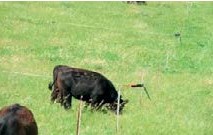
Gabe: I think there’s a place for, and I was asked this question yesterday, I said I think there’s a place for bridging the J curve, so to speak, as farmers, ranchers adopt these regenerative practices and realise that, you know, so many people think that, well, if I move to regenerative farming or ranching, which is what we typically call it, you know, there, it’s going to be a big cost incurred and I’m going to lose money. That’s not true at all. So our business, UnderstandingAg, our consulting business, we’re consulting on over 22 million acres across North America right now, and we increase profitability for most of our clients within the first two years. Increased profitability, and the way we do that is through proper soil testing, proper use of inputs. Okay, the vast majority of farmers and ranchers are grossly over fertilising, over, you know, heavy use of chemicals, insecticides etc. Those are not necessary, and we walk farmers and ranchers down that path, okay, we do the correct soil testing, find out biologically what’s in your soil, and then we’re able to start cutting them back on inputs.
So what’s mostly needed by the government, in my opinion, is education. Government needs to educate. You don’t know what you don’t know, you know. I had no idea about the six principles of soil health when I moved, started moving down this path 25-plus years ago. I had to learn things the hard way. Well, think of if you’re a farmer or a rancher, where are you getting your information? Well, you’re getting some of it from colleges, you’re getting it from government agencies, but you’re getting a lot of it from your suppliers, whether it be fertiliser, chemical, you know, seed feed, whatever the case may be, they’re telling you, but do they really understand how ecosystems function? Do they understand the importance of carbon, the importance of biology in the soil? How farmers and ranchers through their management can affect the small water cycle? How they can make their farms, ranches much more resilient to drought, to the fluctuations in temperature and moisture? And, you know, there’s no, you can’t expect a farmer or rancher just to suddenly know all this. So the government needs to play a significant role in education.
Janet: Do you think that’s the biggest barrier to farmers adopting these practices? Is it that they just don’t know?
Gabe: Okay, that’s an excellent question, and I think the barrier is, number one, it’s fear, fear of the unknown. Realise, since World War II, we have been stuck in this production model, where it’s all about inputs and then all about yield and pounds, okay? So farmers aren’t gonna, they don’t feel comfortable stepping outside the box. Now, I cannot speak for the UK, but here in the United States, 90 plus per cent of farmers and ranchers have to borrow money every year in order to put the crop in the ground and stay in business. Well, the lending institutions are not going to borrow farmers and ranchers that money unless they take part in the current farm programme and follow those protocols so they can be paid these subsidies, okay? Well, those, the current farm programme, at least here in the States, is almost totally antagonistic to regenerative agriculture, because it dictates planting monocultures, it dictates, quote unquote, ‘best management practices’, which are almost a total joke, they are totally antagonistic to biodiversity and to a healthy ecosystem.
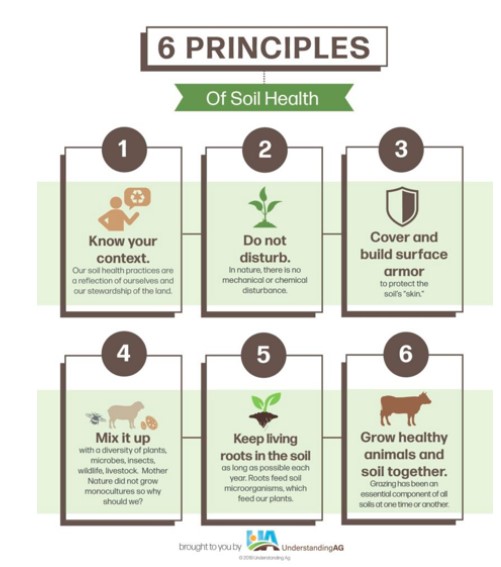
Janet: So, when you’re talking to farmers, and all these farmers that you’re consulting with, what’s the most persuasive argument that you’ve found really makes an impact when you’re trying to get them to pay attention to these ways of operating?
Gabe: Our consultants, we train them that you work within that farmer’s and rancher’s context, so it’s gonna vary a little bit according to each individual operation, but the number one approach we use by far is profitability, and we have the documentation to show that regenerative farms and ranches are much much more profitable, and they’re much lower stress and, let’s be honest, there’s a tremendous amount of stress right now on farmers and ranchers, most of them are strapped financially and, you know, pressures mount, and it’s not a good thing. So, the best way to combat stress is to be profitable.
Janet: Why is it more profitable? What is it that makes it more profitable?
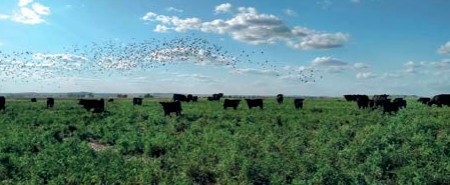
Gabe: Uhm, a number of things. So I will use my own ranch as an example. When we bought this ranch in 1991, organic matter levels were from 1.7 to 1.9 per cent. Now, scientists tell me historically speaking where I’m at in the northern Great Plains, here, organic matter level should have been in the 7 to 8 per cent range, okay. So in other words, 75 per cent of the carbon that was once in the soil is now in the atmosphere due to previous management. Okay, well, farmers need to understand that it’s carbon that drives the system and their farm profitability is based upon that carbon flow, how much energy can they take out of the atmosphere and move into the soil to feed biology.
So today, after adopting these six principles and being at it a while, our organic matter levels are now from 5.3 to 7.9 per cent. Okay, I’m still degraded and I tell people this, you know, I’ve travelled extensively, I’m on hundreds of farms and ranches every year, I have never ever been on a single one, including my own, that’s not degraded. We’re all farming and ranching degraded resources, that’s why we cannot talk about being sustainable. That is a joke. Why do we want to sustain a degraded resource? We need to be regenerative and so, getting back to your original question, as my soil health improved, the biology improved. Think of what happened. I went from being able to infiltrate a half of an inch of rainfall per hour. Today, documented through scientific tests, we can infiltrate over 30 inches per hour. Now, where I’m at, North Dakota, we have never ever received 30 inches of rain in a year. Yeah, okay, so that means that every raindrop that falls on my ranch is going to infiltrate, and then due to the carbon levels in the soil, it’s going to be held there for when plants need it, okay, so that makes me very resilient to drought, that increases profitability, then carbon feeds biology. As I increase carbon levels in my soil, the biology increases and cycles the nutrients.
Now, here’s a little-known fact that a lot of people today, agronomists, would argue with, but we’ve done this, our firm Understanding Ag has done total nutrient extraction tests on hundreds of farms, and what we’ve found, we have yet to find a single farmer ranch that does not have adequate nutrients already in the soil, okay, so nitrogen, phosphorus, potassium, and not just by a little, there’s thousands of pounds of this in the soil. So you might ask, well then, why do farmers and ranchers need to fertilise? Well, the answer is, they don’t have the biology in the soil to cycle those nutrients, so as we adopt these principles, get more biology, more nutrients become available, that allows us to systematically, methodically cut back on the amount of inputs, that increases profitability and then, because you have better soil aggregation, better biology, more water, and water is critical, and I know in the UK often people have issues with too much water, but realise it’s not so much too much water as it is a lack of soil aggregation and a lack of the ability of that water to move throughout the soil profile. You know, biology in the soil lives in and on thin films of water, it’s a sub-aquatic ecosystem, so water in the soil is a good thing. But you can’t have it waterlogged or it becomes anaerobic. So what we find, as we adopt these principles and advance our soil health, we’re able to increase production too, also, so the increase in profitability comes about from a lowering of inputs and an increase in production.
Janet: And you’ve also done, haven’t you, shortened the supply chain so you get more of your income at the farm gate alongside these farming practices? Can you say a bit more about what you’ve done there?
Gabe: Yeah, so on our own ranch, we grow a wide variety of different cash crops, corn and wheat and barley and oats and rye and vetch and peas, and many others, but we also, we raise grass-finished beef, grass-finished lamb, pastured pork, we do eggs, we have laying hens, we do broilers, we do some turkeys, we do a little bit of vegetable production, and we do honey, and then we market all those products direct to consumers from our ranch and we’re able to ship anywhere in the lower 48 contiguous United States and it more or less eliminates, so to speak, the middleman and goes direct to consumers. We add about 35 per cent net profit margin on top of what we make, you know, on the production side of it. So essentially what we’re doing, we’re keeping over 70 per cent in our pockets versus, you know, the average, and it’ll vary, from 8 to 11 per cent of farm sales, you know, actually go to the farmer. Well, we’re over 70 per cent.
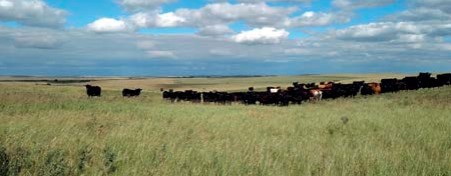
Janet: You must come across lots of farmers that say, well, that’s all right for you, on your particular land, in your particular circumstances with your particular soil, but it won’t work for me because I’m in a different country, a different climate, a different soil type, different type of farm. How widely applicable are the methods you use? And we should probably, for those who haven’t actually had the joy of reading your book, we should probably say what these principles are as well actually. Let’s run through them quickly, and then say something about how widely applicable they are too.
Gabe: Okay, the six principles very quickly are, number one: context, and that was added since I wrote the book. We came to the realisation that, you know, nature always operates in context. You know, I tell people, there’s a reason bananas don’t grow in North Dakota, you know, we get winter up here, so we see way too many farmers or ranchers trying to operate out of their context, okay. You have to grow the species that survive in your area and thrive in your area in the climate and environment you’re in, okay. Principle number two is: least amount of mechanical chemical disturbance possible. Nature does not till the soil as copiously as we do. Yes, there’s earthworms and burrowing animals that till the soil, but we’re not turning the soil over with a plow, you know, nature just doesn’t operate that way. Nature, yes, plants emit chemicals, animals emit chemicals, but not the copious amounts of insecticides, pesticides, herbicides and fungicides we’re using in agriculture today. Those are all only needed because of our management, or lack thereof.
The next principle is armour on the soil. You should never ever see bare soil. Walk into a forest, walk into a native prairie ecosystem, it’s always covered, not only with living plants, but there’s that residue layer that protects the soil from wind erosion, water erosion, evaporation. The next principle is diversity. Where in nature do you find a monoculture? The answer is, you’re not going to find one unless mankind has, through mismanagement, dictated that, you know. But what do we do in agriculture, we plant monoculture fields, right, it’s just totally antagonistic to how a healthy ecosystem functions.
The fifth principle is: living root in the soil as long as possible throughout the year. Nature always tries to put living roots in the soil, so it can take that energy, that sunlight, and then through photosynthesis, convert it to all these carbon compounds that the plant uses – part of that for growth, the rest is pumped into the soil to feed biology. We need more of that. Look, what we’re doing in agriculture, we grow a cash crop and then the fields sit idle for long periods of time, that’s just not how nature functions.
And the final principle, and one of the most important, is animal and insect integration. Nature and ecosystems, natural ecosystems, do not function properly without animals and insects. You know, there are studies, that study came out a couple years ago, Germany lost 75 per cent of its biodiversity in a 25 year period, and we’re seeing that worldwide. If we don’t have insects, we’re not gonna have a healthy ecosystem. If we don’t have grazing animals out on the landscape, they play an important role because once a plant is grazed it sloughs where it exudates so it regrows, that cycles more carbon, and then that animal, the microbiome in the gut of that animal is closely related to the to the microbiome in the soil and it’s a transfer of biology and nutrients. You know, those animals, as they defecate and urinate, are putting nutrients back onto the landscape.
So, what we tell our clients is, your ability to be successful with regenerative agriculture is directly proportional to your understanding of, and adoption of these principles. Too many people adopt one or two principles and then they get frustrated, well, it doesn’t work for me. Well, no, it would work for you, if you understood them and applied them. And here’s the challenge I put forth to anybody: I will bet my ranch here in North Dakota against your farm or ranch anywhere in the world where there’s land-based production agriculture, that I can get these principles to work on your ranch. I’ve made that bet, I’ve stood in front of audiences in Australia and all over North America and made that statement, South Africa, and I have yet to have anybody take me up on it but I’d be happy for them to do so because I’m going to own their farmland. Well, these principles, if you look, think about these six principles, walk out on any farm or ranch, they’re applicable. Now, you’re going to use different crop species, you’re going to use different cover crop species, you may use different livestock species, but the principles are the same, and that’s how I’m 100 per cent confident that they’ll work.
And the other thing is, we’ve seen it over and over. I can, you know, pick up the phone and call into any country around the world and talk to people who are practicing regenerative agriculture.

Janet: Yeah, I’ve visited some, actually, here in the UK, and what you say, certainly on the farms I’ve visited, rings true. If there are farmers listening now and thinking, well, okay, I want to do this but, as you say, I’m fearful, there’s a risk to me of change, but I want to, I want to make a start, where should a farmer start if they want to begin adopting these principles? What’s the most important thing to do first?
Gabe: Yes, great question, and the most important thing by far is education. You need to educate yourself, and there’s a lot of good resources out there, our firm UnderstandingAg and then our educational arm Soil Health Academy, we have a wealth of resources on our websites, and then I would say, do your homework and find out who in your area is doing this, and go talk to them and attend, you know, workshops or field days where these are discussed. You know, there are a number of people who are doing an excellent job in the UK and in Ireland adopting these principles and farming and ranching regeneratively.
Janet: Can we talk a bit more about practically what it looks like on your farm? So, if I were to visit your farm, if we were watching you on a screen now, if we actually look at your farm, what’s different about it compared to when you started?
Gabe: Yeah, a lot of people drive by my ranch and they don’t give it a second thought, except at certain times of the year, because I have cash crops growing just like my neighbours do, there’s livestock out grazing in the paddocks just like my neighbours. But when we harvest that crop, they will notice, gee, Gabe’s fields are still green, there’s growing plants there, gee, now he’s got the livestock out grazing those plants during the winter. Well, you know, our livestock are not in confinement, they’re out on the landscape all year, even during winter, and we get a lot of snow, you know, we’ll get six plus feet of snow during the winter, and obviously it melts down and, but the livestock are not confined, they’re out, and the difference is, I have living diverse plant communities on my fields, in my pastures, as long as possible throughout the year, and that’s cycling that carbon, it’s out of the atmosphere into the soil.
The other thing, if they stop and talk to me, I’m always happy to take them over to the neighbours’ fields, put a spade in the ground and look at the soil there, and then just cross the fence line into mine and look at the soil, same soil type, totally different, totally different, and I tell people, because I often hear that, oh, you don’t understand that my soil is too high in clay, my soil is this or that, and I ask them, but do you understand you can change that? Now, no, you can’t change the inherent properties, it’s either going to be sand, silt or clay, or some combination thereof, but just because you have clay soils, doesn’t mean it can’t be well aggregated, it doesn’t mean that, you know, it can’t be full of life and functioning properly, and that’s a direct reflection of them. So I tell people, I’m not going to feel sorry for anyone who says, oh, my soils aren’t like that. No, you just don’t understand, you know, you need to educate yourself, and if you do, you can make significant changes, and I often get asked, well, how long does it take? So here’s what we do with our clients.
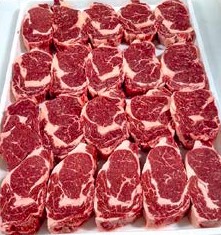
First of all, every new client of ours, has to educate themselves. We have an online course, RegenAg 101. They have to review and understand that, because we’re not going to send a consultant out and then it’ll be like talking a foreign language to this producer, they have to understand that, and then we tell them, you have to dedicate at least one field for five years, and for five years we’re going to walk you through and help you adopt those six principles on that field.
Normally what happens by the end of year two or by the end of year three at the latest, they’ve got all their entire farm enrolled and moved down the regenerative path, because you can see the differences in the soils, and you’ll start to see the difference in profitability certainly by the end of year two. Now, the only caveat to that, of course, is if there was a weather extreme like hail, drought, flooding, something like that, yeah.
Janet: So when we’re thinking about measuring, we’re thinking about a kind of England level, which is where I’m looking, if we want to measure the success of regenerative farming. We’ve talked about soil organic matter being one thing, we talked about profitability being another, are there other measures that we could use to say regenerative farming is really making a difference in being successful? How can we tell?
Gabe: One of the easiest ways is the aggregate stability test. You need to measure, see, a soil aggregate, you know, and all farmers, the soil aggregate is that little crumb, that chocolate cakelike structure in the soil, a soil aggregate will only last about four weeks and then new ones need to be rebuilt, and soil aggregates are sand, silt and clay particles held together with sticky substance put out by mycorrhizal fungi and biology. So we can measure soil aggregation and aggregate stability. How stable those aggregates are in water will directly tell us if you’re moving in a positive direction or not. We can also do what’s called a PLFA test, phospholipid fatty acid test, which tells us the amount of bacteria and protozoa and nematodes and fungi, and the balances thereof, because in a healthy ecosystem, you’re going to have a very good population of all of these. But your predator-prey relationship, in other words, the balance of bacteria to protozoa and nematodes, is going to be such that you have the prey that can eat the bacteria, and that’s what cycles your nutrients.
So, then the other things we, of course, measure are biodiversity: plant communities, insect communities, wildlife, birds etc. We do counts on them because wildlife, you know, whether we’re talking birds or insects, they’re going to show up where there is the home and habitat that they need, and it is amazing on these regenerative farms and ranches how quickly that happens. Then, the other thing, of course, we measure is farm profitability, because all of these ecosystem services have to take a back seat to the ability of a farmer or rancher to stay out there, make a living and support their family.
Janet: And often it’s presented as a choice between doing that and doing things which are good for the environment, but what I think is really interesting about your book and your approach is that you’re saying, no, it’s not a choice, you can do both.
Gabe: That’s exactly right. The beauty of this whole thing is that what’s good for farmers and ranchers pocketbooks is also good for society and good for the environment. You know, I testified just here, six weeks ago, in front of the U.S. House, and I went there to try and show them that agriculture is part of the solution, it’s not part of the problem. So often agriculture is vilified, oh, we’re releasing too much carbon in the atmosphere, we’re burning fossil fuels, and animals are are putting out methane and that’s destroying the environment, and I told them, look, in the current production model, yes, that’s the case, but in the regenerative model, that’s not the case, we’re actually a net carbon sink, animals out grazing on the landscape will sequester more carbon, we have proof of that, and not just a little bit, a lot, and we need more animals out on the landscape, not less, but they need to be properly managed. And so it benefits biodiversity, you know, our water is going to be cleaner because we lower the amount of synthetic nutrients that are applied, and we’re able to hold those nutrients on the landscape via living cover crops and living plants, so it cleans up the watershed, we’re, as I said, taking much more carbon out of the atmosphere. And then, a very very important one, perhaps one of the most important is, we now are doing nutrient testing of foods grown in in a regenerative model versus foods grown in the conventional model. The differences are absolutely mind-blowing.
We’re working with Dr. Stephan Van Vliet at Duke University Medical Center. Through the use of a mass spectrometer, he can measure over 2,500 different phytonutrient compounds. He is finding significant differences, you know, in the food grown, in regenerative versus the food grown conventionally. When you look at the human health crisis going on in this world today, you know, the increase in ADD, ADHD, Parkinson’s, Alzheimer’s, autoimmune diseases, cancers, the list goes on, most of those, 95 plus per cent of those can be mitigated with a healthy gut microbiome, and a healthy gut microbiome is directly related to the food that we eat. And so all of these things, and this is what we’re such proponents of, let’s come together and work together as a society on 80 per cent of the things we can agree on. The other 20 per cent will work themselves out, but we all can agree that more carbon in the soil is a good thing, we all can agree that clean water is a good thing, we all can agree that farm profitability and the revitalisation of our communities is a good thing, we all can agree that food higher nutrient density is a good thing. So why can’t we work together on this?
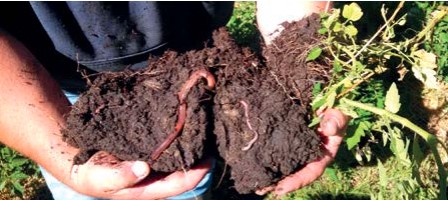
Janet: Build on the common ground.
Gabe: Exactly.
Janet: Lots of people look to you for inspiration and learning and advice. Who do you look to for inspiration?
Gabe: Well, the first is God obviously. You know, I tell people he put me through what he did those 25 years ago because he knew I had a big mouth and I’d spread the word! And so I look for inspiration in nature, you know, I tell people, and I wrote in my book that during those four years of hail and drought, I would walk through our native pastures and observe how ecosystems function, so that inspires me, but what really inspires me is the stories, when I see a farm family which was struggling, and now they’ve been able to pay off their debt and, you know, their family is happy, and the children are actively involved in the farm or ranch, that inspires me, and that’s the reason I do what I do.
Janet: Lots of farmers who start adopting these sorts of practices say that when they first start their neighbours laugh at them over the fence and think they’re completely wacky. Did that happen to you? And if so, how did you hold your nerve in those early years?
Gabe: Oh, very much so and realise that, I did not grow up on a farmer ranch, I grew up in town, so everybody expected me to fail. Well, that was out of the question. I was not going to fail, it’s not in me, you know. I tell people I fail at things every year, but they’re just learning experiences, but I wasn’t going to fail as a farmer rancher and, you know, back then none of the neighbours would offer to help me out or anything because they just wanted to buy my land. They thought I’d go broke, they’d be able to buy my land. Well, I really leaned on my family and my faith, and that’s what got me through this.
Now today, you know, back when I went through this, there was no internet, there wasn’t the communication we have today. I couldn’t have a Zoom meeting with a fellow regenerative agriculturalist in another state. Now today, it’s a real community, and one of the things we’re most proud of is that those of us involved in regenerative agriculture are willing to share with anybody. You know, so often in conventional agriculture, you want to keep what you’re doing a secret because you want to have a leg up on others. That’s not the way it is in regenerative agriculture, we understand that what’s good for us is good for our neighbours, good for our community, and let’s all work together and, you know, there’s plenty of people to sell food to, and that’s really what we’re doing is selling food and fiber and let’s work together for the common good.
Janet: And do you think there’s a mindset that you need to be a regenerative farmer. I’ve heard people talk about a shift in mindset.
Gabe: Yes, definitely, there is, and the hardest thing for us to do, when we educate as to regenerative agriculture and these principles, is realise we’re changing, if you’re a farmer and rancher who has been farming and ranching a while, you’ve got these biases and you’ve got these beliefs, these beliefs are based on, not only your own practices and what’s happening, your own experiences, but also the experiences of your fathers and grandfathers and neighbours. Well, what you’re doing in regenerative agriculture is totally different, okay. I just told you earlier in this, that there’s plenty of nutrients in the soil, well, that’s certainly not what you’ve heard, it’s not what you’ve observed, it’s not what your agronomists tell you, it’s not what your neighbours tell you. But I can prove that, through simple soil tests I can prove that. So that’s what we do, we have to go turn their world totally upside down, and then the next thing, we have to teach people the power of observation. Okay, most farmers walk out in the field, they see a weed, they want to spray that weed, well, I want to know what weed, more correctly forb, is that, and then what’s that forb trying to tell us. For instance, I use dandelions a lot, dandelions tell me that there’s a lack of calcium cycling in that soil, and you need plants that will cycle calcium. You need to observe, you know, much more than is done in conventional agriculture.
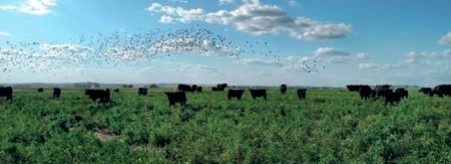
Janet: And you’ve also talked about, I just read Nicole Masters’ book, and she quotes you as saying that you plan to, you plan to fail at something every year. Is that part, is that part of the mindset as well?
Gabe: Uhm, yeah, you know, people ask me, well, who did you learn from? Well, I learned a lot through trial and error, and I tell people, you know, my son and I are experts at failure because we want to fail at several things every year. How do I know if a certain cover crop species will work on my land or not? How do I know if a crop combination will work or not? And the thing is, you just make, you try these things on a small scale. If they work, then you increase the acreage of those, if they don’t work, we try things twice, and if it fails twice in a row then, okay, we move on to something else. But I’ve tried hundreds of different cover crop species, you know, I’ve tried different scenarios as far as grazing my livestock, you know, do the sheep go ahead of the cattle? Do they go behind? Do they go with them? You know, where do I move the laying hens? You know, we’re always experimenting, but that’s what makes it fun. You know, I tell people, you know, I used to wake up every morning trying to decide what I was going to kill that day, was it going to be a weed, a pest, fungal disease? I was going to kill something. Now I wake up every day, how do I get more life on my ranch, and it’s much more enjoyable, and much more profitable working with life as compared to death.
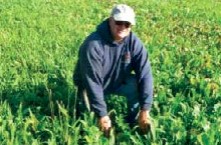
Janet: What’s next for you on your farm? What are your goals for the next 10 years, having achieved everything you’ve achieved so far?
Gabe: Yes, and on our own ranch, three years ago my wife and I turned the ranch over to our son and he’s 33 now, and he’s going to take this way beyond where I did. I don’t know exactly what he has planned, I just know, I have confidence and I’ll support him, and whatever he decides, my personal goal is just to do what I’m doing right here with you, spread the word of regenerative agriculture, and try and heal, not only our ecosystems, but heal society. Let’s come together for the good of it.
Janet: It’s really interesting hearing you talk about the social aspect of this, because some of the commentary on regenerative agriculture is critical, isn’t it, of not including that social aspect and not thinking about social justice, racial justice, where do you stand on that set of issues?
Gabe: Very good question, and the beauty of regenerative agriculture is, it knows none of those. You know, we work with anyone. I mean, we’re working with indigenous peoples, we’re working with people of colour, every faith, nationality,
creed. We’ll work with all of them because it knows no boundaries. And the other thing is, you know, with bringing profitability back into agriculture, think of, I don’t know how it is in the UK, but in the United States here, there’s large populations of immigrants that do the manual labour. Well, by improving the profitability in a farm or ranch, we can improve the wages paid, we can improve their living conditions, we can, you know, help them move forward as an individual and reach their potential and dreams, and that’s a good thing.
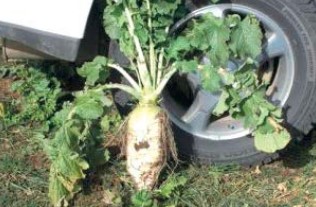
Janet: And I’ve got a question to finish with. Before I do, I should say thank you, because I, so the people have, Twitter, the farming community on Twitter, because I said I was going to be talking to you and asked people to suggest questions, so lots of the things I’ve been asking you have come from farmers in England who are keen to hear your answers to some of the things I’ve been asking, and the last one was from somebody who has wanted me to ask you, which aspects of your business bring you the most joy? Gabe: And I tell people, the thing I enjoy the most is, those who know me, I don’t sleep much, so I’m outside when the sun’s coming up, and I love, at that time, taking a walk across the native prairie with my dogs and then observing the livestock as they get up and start their day, and I listen to the birds and see the wildlife, and that really brings me joy.
Janet: I can imagine why, Gabe. It’s been absolutely brilliant to talk to you, thank you ever so much for your time and your insights. It’s been fantastic. I could happily ask you a hundred more questions but we’re out of time, so I just want to thank you very much for all that you’re doing and for coming on our podcast today.
Gabe: Well, thank you, it’s a pleasure being with you. Happy to visit with you anytime, Janet.
Janet: Thank you so much. Thank you for tuning in today to the Future Farming podcast. You can follow the podcast at all the normal places where you get your podcasts, and you can also follow us on our blog by following the QR Code. We’ll be recording the next episode soon and we’ll look forward to seeing you then. Bye!

-
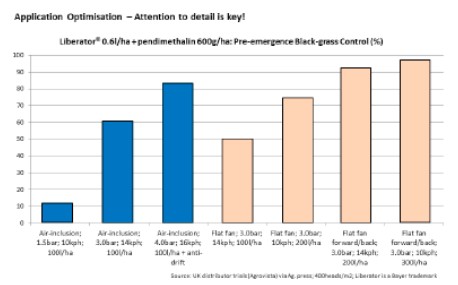
Blackgrass Control Are You Using Enough Dihydrogen Monoxide?
Written by James Warne form Soil First Farming
Dihydrogen Monoxide or DHMO has been used for years to improve the distribution and performance of soil acting residual herbicides along with other uses such as a solvent, coolant, and used extensively as a fire retardant. It is critical for life, but deadly if too much is imbibed. You’ve probably heard of DHMO by its more common name – water. The slightly flippant tone of the opening paragraph belies a message of real importance when it comes to simple and practical advice on the use of soil residual chemistry. The real message is if you want greater efficacy from your herbicide spend, use more water.
This year has seen, in many areas, a massive seed return from the common grassweeds, brome, blackgrass, ryegrass etc. The last two autumns have also proved to be very tricky for crop establishment, both of which may combine into the perfect storm of earlier drilling and large seed banks ready to germinate. Trial work (by Agrovista) reveals that pre-em herbicide efficacy can be improved by the addition of more water. At 100l/ha a programme (see graph below) using DFF/FFT/PDM mix achieved just 50% control of blackgrass, But the same programme with 300l/ha water achieved over 90% control. Can you afford to ignore this evidence?
DFF & FFT costs in the region of £20/ha at full rate, Pendimethalin is in the region of £20/ha. Prosulfocarb at recommended rate is circa £30/ha. An extra 200l/ha of water costs £0.4/ ha. To nearly double your blackgrass control. Of course, it’s not quite that straightforward. The above trial was conducted using twin flange fan nozzles (forward and back), none of those expensive air induction or ‘product’ type nozzles. Spray pattern was fine, 3 bar pressure and a moderately low forward speed of 10km/h, (trial results below). Just to be clear the graph above is showing that to achieve above 95% control of blackgrass use 300 litres of water, with forward & backward facing flat fans nozzles at a forward speed of 10 kph. Research by Stephen Moss et al has shown that in most situations a minimum of 95% control is required to reduce seed return.

Those of you who are BASE – UK members also have the privilege of being able to watch Chris Martin’s excellent presentation of the correct choice of sprayer nozzle for different situations. Those who are following a Conservation Agriculture strategy will hopefully have resisted the urge to do a little light surface cultivation and will now have all the weed seed on the surface. Excepting the fact that there will always be a little seed which germinates from depth, a legacy of historical cultivation. With the seed on the surface it is now in better place to be controlled with actives such as flufenacet (FFT) and pendimethalin (PDM).
These two key actives provide the backbone of many preemergence herbicide stacks and are probably the most cost effective too. They are primarily taken up by the roots of the germinating grass weeds. Therefore the roots of the blackgrass plants have to come into contact with the herbicide to be taken up and be effective. If the weed seed is emerging from depth the germinating seed roots are very unlikely to encounter the active ingredient and can happily push its cotyledon through the layer of herbicide on the soil surface without harm.
Combine this strategy with spring cropping, wider rotations, more broadleaved cropping etc and you should find that grass weeds become less problematic year-on-year.
-
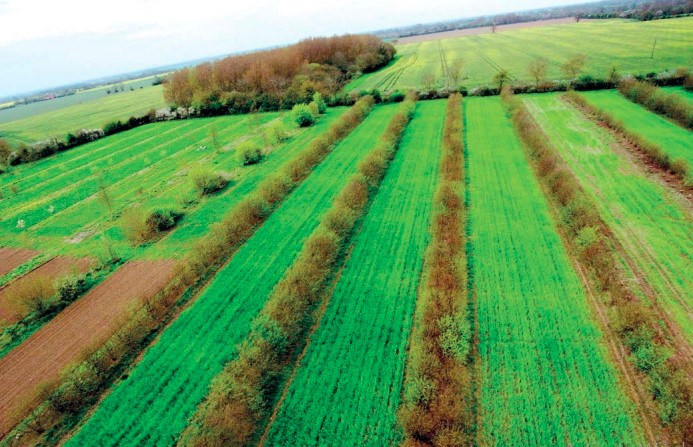
Agroforestry: Learning From Four Pioneers
Written by Mike Abram
Interested in agroforestry, but don’t know quite where to start? Four pioneers shared their expertise in an
excellent knowledge exchange session at Groundswell.
More farmers and landowners than perhaps ever before are starting to consider agroforestry as a viable enterprise for farmland. Recent government announcements to treble annual tree planting in the UK by May 2024 as part of climate change mitigation and net zero targets is helping to set the agenda. While that might be in the main for woodland creation, Defra has also recently approved an Environmental Land Management Test and Trials proposal from the Organic Research Centre and partners to explore how farmers can integrate agroforestry at scale.
That followed on from the Climate Change Committee, the UK’s independent adviser on tackling climate change, recommending 10% of the UK’s crop and livestock area should be agroforestry. The Woodland Trust suggests that would require an extra 39,000ha of agricultural land for agroforestry each year, which by 2050 could deliver 6 million t/ha CO2e in savings. Currently only 3% of UK’s farmed land is estimated to practice agroforestry, and that shows with technical advice and support only just starting to come on-stream. Early adopters, such as those on a panel at Groundswell, have had to rely on trial and error to make their schemes work, and were able to share some valuable experience on five topics during an hour-long session.
- Selecting the right tree
Identifying tree crops with market demand was a key focus for Dartington Trust’s 19ha Broadlears Field agroforestry project in Devon, said Harriet Bell, who helped establish the innovative land share agreement between five businesses. “We found people who had specific demands, qualities and quantities, and we endeavoured to design a system that will deliver that outcome. “The other thing we did was try to spread the risk with a variety of different trees. We tried something new in Szechuan pepper, which hadn’t been grown here before, but in a small way compared with staples such as apple and elderflower which we knew would grow well in Devon.
In a silvo-pastoral project also on the farm, understanding livestock behaviour and dietary needs were key considerations, she added. For Cambridgeshire farmer Stephen Briggs an economic return within his 15-year tenancy was a pre-requisite for tree choice on his 52ha silvoarable scheme, alongside the need at the time to maintain Basic Payment Scheme eligibility for his landlord. That led him to choose 13 varieties of apple from heritage to modern. With no other fruit trees in the immediate area of his farm, it has meant lower pest and disease pressure, although selecting trees that will grow in your locality is important.
Other factors to consider were soil type, good planting stock and being able to buy it, he added. “That’s going to be an increasing challenge with the government’s tree planting targets – where is all the planting stock going to come from? You have to be thinking nearly two years ahead,” he advised. Climate change was another factor to reflect on both in terms of spreading risk of pest and disease pressure, as well as for future markets, he said. “People are starting to think about, with climate change what we might be able to grow in southern England, which we can’t grow currently.” Examples potentially were almonds, olives and Eucalyptus.
Your own farm could also be a market for produce from trees, said Ben Raskin, head of agroforestry for the Soil Association. “You could be growing your own fence posts or wood chip. There’s lot of stuff you could grow to replace your own inputs.” Multi-purpose high-value trees from which you get more than one product could be important, said Prof Steven Newman, who assists with the development of large-scale agroforestry projects on farming estates. “Nut trees fall into that category, particularly walnut and hazel.”
For example potential walnut markets included fresh walnuts, green nuts for pickling or for Greek / Cypriot sweet desserts, and timber, he explained. “There are at least 60 different products you can get from walnuts.” Be innovative, he advised. “Globally there has been a 20% increase in nut consumption over the past seven years. That’s a massive shift. Nut milks have an incredible potential, while think about replacing carbon inefficient products.”
Payback year for walnut was year seven, and year five for hazel. “After that you are into some quite significant gross margins, but it’s not instant. The payback year depends on the cost of the tree, which is the dominant cost. Buying bigger orders reduces the cost per tree. “The most profitable tree currently is cricket bat willow, which is a classic choice for a silvo-pastoral system. Nut trees, especially walnut, agroforestry can improve on this, providing an annual income, plus a final value from the tree when it has finished its productive life.”
- Planting and managing for survival
Planting trees into heavy clay was not easy, Mr Raskin said. On such a site he used a GPS-guided subsoiler to create a straight line and a slit to plant into, which made planting quicker and gave reasonable establishment. “But in 2018, when we had the drought, the trench we created just split open so there was a 1m crack in the soil in which this poor little twig was sitting in and had nowhere to grow. “So I think next time I’d plant about six inches to one side of the crack so you’re not directly in it.”
Planting date was also important – January-planted trees mostly survived while those in March mostly died – as was mulching, he said. “But I wouldn’t use mulch mats – they create the perfect habitat for voles, whereas where we just used wood chip to mulch directly, we tended not to have problems.” Whether to use guards or fencing was a cost versus risk debate, he said. “It’s the value of the tree and how many trees you have in the field. For example, in one field where we had a lot of expensive fruit and nut trees, and it was worth deer-fencing the whole lot. “In another field, we just have single strand electric wire down each side of the row, with a little guard on each tree for hares and muntjac, and it’s much cheaper. We feel we can lose quite a few trees before it’s worth spending £30,000 on fencing.
“Straight lines are obviously easier to fence, whereas if you have clumps of trees, you’re probably better off doing them differently or individual trees.
“In the end, how much can you risk losing that tree? If you’re spent £0.50/tree and a £1 on a guard you can probably afford to lose quite a few, while if you’ve spent £25/tree and you’re not going to get a return for 10 years you probably want it to survive.”
Buy good quality posts, Mr Briggs said. “We bought on a budget, and after three years when they’ve rotten at the base you have to spend all over again.” It cost him approximately £5-7 to put a fruit tree in the ground, including mulch, tie, guard and posts. In his arable system, he hadn’t anticipated creating 4,500 roosting posts for pigeons, where two or three landing can break young saplings. “We solved that by putting a 10-foot bamboo cane with each tree, which the pigeons landed on.” Also think about what you’re doing underneath the tree, what understory will grow well and how you’re going to manage it, he said. “I wish we had put a weather station in from day 1. We benchmarked a lot of things, but I know we have wind reduction and warmer climates in the field, but I haven’t got the backup data on that.”
3. Harvesting
Think carefully about labour for harvesting, Prof Newman said. While community labour might be an option for some, the lack of available labour for picking was driving a change towards mechanical harvesting. “All the large-scale systems we’re designing for nut trees are mechanically harvested. That means changing the hazelnut varieties, so they are free husking and means when you shake the tree the nuts come down relatively swiftly. “Similarly with walnuts when they fall to the ground they can be picked up,” he explained. It wasn’t just harvesting labour to consider but also for summer or winter pruning, Mr Briggs added.
With apple trees in most systems you wouldn’t get any yield for around five years, with yields peaking after about seven years. “You should be looking at least 5t/ ha up to 20t/ha if you’re managing quite intensively.”
Another consideration was the impact of harvesting tree crops on the crop in between the trees, Ms Bell said. “When we were designing our silvo-arable system we were looked at when we would be taking a cut from our arable part of the field, and when we would need to be in with heavy machinery to harvest the trees and tried to design the whole system with that in mind. “For example, with elderflower which is usually harvested in May or June, we put in a wider margin around those trees so we could still get in and harvest without it having a detrimental effect on the arable crop.
4. Marketing
Adding value when marketing produce was key because competing on price in a global market was unlikely because of high labour costs and standards in the UK, the panel explained. “We were interested in adding value from the start,” said Mr Briggs. “All our fruit is either sold as eating apples or juiced and sold through our farm shop. We wanted to generate a market, get some processing capacity and create a brand for that produce.
“By juicing our apples and putting it in a bottle, while there is a cost, you’re pretty much quadrupling its value. You’re turning something that was £280/t on the wholesale market into £1200/t.” But as with stock markets demand and value of products could change and with that future returns, the panel noted. For example, currently cider apples were generating a poor return, Mr Raskin said. “I wouldn’t be considering cider at the moment – the value has dropped out of the market.”
While spreadsheets were useful to model potential future risks, trees within typical agroforestry schemes were only 8-12% of the land area, Mr Briggs pointed out. “So around 90% of the area is going to be doing something different so you are spreading your risk.”
Agroforestry had other benefits including sheltering livestock or raising the temperature between the rows in arable crops, Mr Raskin added.
Shading up to 27% of a potato crop didn’t affect yield in Prof Newman recent research, while Ms Bell suggested agroforestry also helped manage the risk of unpredictable weather. Storms during 2019 harvest on Mr Briggs’s farm resulted in 20% loss of grain in open fields compared with 10% in agroforestry fields because of slowing down wind speeds, he said.
- What options do you have as a tenant?
With nearly a third of the land area in the UK tenanted, the issue of whether agroforestry is deliverable as a tenant is no small matter. At Dartington, a novel solution was used, Ms Bell said. “The Estate owns the land, we have a tenant with a FBT for the entirety of the field, and then we used licences to licence each of the tree growers for just the row of trees they were growing. Our tenant was paying the estate, and the people growing trees paid rent to him.
“Legally it was quite interesting as the tree growers in the first few years were investing quite heavily in getting trees to productivity, but then worried that when the trees became productive we would turf them out. “So in the agreement we wrote that the cost of moving them on would increase during the first eight years as the trees established, and then once they started harvesting and getting their money back, the value of those trees would start to depreciate. “And as the landowner we also underwrote the licence between our tenant and those businesses growing the trees so they had security if the tenant changed.”
In Mr Briggs case his landlord was most concerned about letting the farm if Mr Briggs left, and whether it would damage field drainage. “We signed an agreement that we would take the trees with us if we left, so at worst I have a wood fuel business, and I found a piece of work that showed if drains are maintained trees don’t cause any problems.”
Farming with trees had allowed him to become more productive, he suggested. “I’m charged rent on a two dimensional – per hectare – basis, but I can make the farm bigger by farming it in a 3D way and make it more productive without affecting the rent at all.”
-

Farmer Focus – Rob Raven

The phrase “Regenerative agriculture” is a relative newcomer to our collective vocabulary, and although it roughly describes the type of farming I attempt to practice, it is not a phrase that sits easily with me, as it is so vulnerable to being hijacked by special interest groups, and can mean very different things to different people. Rather than aspiring to any particular farming system, my strategy has always been about making the most resilient and de-risked business I can. Mine is a family farm of just under 700 acres, which has to support several householdsthis is no easy task and has always required a certain amount of lateral thinking. This strategy has led me on a circuitous path of logic to where I am now- managing, in one way or another, just under 10,000 acres of land and livestock which is all somewhere along what we now call “the regenerative journey”.
The first step on this journey was, bizarrely enough, to facilitate a potato contracting enterprise we were running at the time. With staff and machinery tied up on potatoes for much of the year, managing the crops on our own heavy land became a challenge. Up until then we had been on a plough-based continuous wheat rotation on Beccles series clay (which famously goes from too wet to work, to too dry, in about five minutes). Frustrated with the endless hours of power harrowing, and seedbeds that were often either dried out clods or wet slop, we wanted an alternative. We had read about direct drilling and thought this could be the answer.
We couldn’t justify buying a direct drill and there were no contractors around, so we decided to build one (pictured). It was a very modest attempt, but it did have narrow tines on 200m spacings, independent coulter depth control and hydraulically adjustable downforce on the press wheels. It was very effective and we pulled 4m with 100hp. We used this along with reduced cultivations, livestock integration and a more varied rotation while we learned how to make the system work, and before long we were direct drilling all the heavy land every year. With the reduced workload that direct drilling brought us, we suddenly found we had time to spare. We started to pick up contracting work with our direct drill, but it wasn’t up to a lot of roadwork, and since our confidence in direct drilling had grown and we could see an opportunity on the horizon, we invested in a “proper” disc direct drill. This gave us scope to plant on the green, become more adventurous with our cropping and cover cropping, and allowed us to take on more land with kit that was up to the job. We have since added to the fleet and now run disc and tine drills, as I believe there is need for both to make this system work! I also believe that lightweight drilling tractors are beneficial on our land type, so we run several smaller drills with low HP tractors on wide VF tyres.

As any reader of this magazine knows, the kit is only a very small part of the equation. We invested heavily in imported compost, set up muck for straw arrangements, and grew cover crops wherever possible to get some much-needed organic matter in the upper layers of our soils. Livestock were brought in over winter, to help manage over-zealous cover crops and turn them into an asset rather than a liability to following crops.
The farm now looks (and behaves!) radically different from the power harrow days. The top three inches of the heavy land used to be tan-coloured clay that was either like concrete or plasticine. Now it is highly organic, black and tilthy, and can reliably be direct drilled autumn or spring. Ruts and wheelmarks are a distant memory. I used to live in fear of a wet autumn, but the last two years have filled me with confidence. In both 2019 and 2020 we received over 100mm of rain in the last week of September- I thought we were snookered, but was astonished to find that the disc drill could get going on heavy land just a few days later.
I watched the drill go smoothly through a low place that used to stand with water every year, and it was a Eureka moment for mepeople often think that direct drilling is inherently risky, but by getting the land in excellent order for direct drilling, we had massively reduced the risk posed to our business by extreme weather.
In late 2019 as it became clear the UK was facing a disastrous wheat year, wheat prices climbed and malting barley fell off a cliff. Walking our multispecies cover crops in late November, I realised that despite colossal rainfall by then, they were still trafficable. Those fields had been destined for sheep grazing followed by spring barley, but we did an about turn and used the disc drill to plant wheat straight in to them. A couple of weeks later when the wheat was sprouting well and it looked like it would make a crop, we terminated the cover and ended up with a good crop of valuable wheat. Once again, the investment in our soils was paying dividends by allowing us to be fleet of foot and take advantage of an opportunity that would not have been on option on bare or cultivated soils.
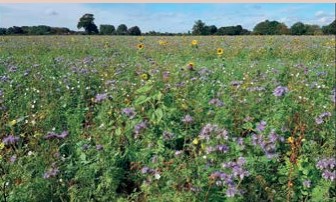
Going forward, it is my intention to continue to de-risk our cropping in a number of ways. An easy win is to keep a stock of home saved seed on the farm – meaning that any autumn cropping that doesn’t get drilled or is not satisfactory can easily be replaced with spring drilling. We therefore retain some stocks of spring beans, barley and linseed on farm until spring drilling is completed. Seed is all tested rather than treated, meaning that anything not used can be returned to the heap or saved for use in cover crops. Another is to work hard to reduce the early spend on crops. Gone are the days of spending upwards of £100/Ha on a crop of hybrid OSR before it has even emerged- we now use home saved seed, with companions, which are direct drilled and then left alone. If it looks good, it will be a crop of OSR. If it looks poor or is attacked by CSFB, it can be a catch/cover crop into which we direct drill another crop.
Much improved soil biology, reduced soil disturbance, and retaining an open mind when it comes to cropping choices has allowed us to reduce inputs considerably. Pre-em herbicides are avoided wherever possible, insecticides have been eliminated, and we are conducting on farm trials to establish how far we can reduce our fertiliser and fungicide use. The micro (and macro) biology on the farm is hugely improved, as is our carbon footprint and I hope our wider environmental impact. I am really proud of all this, but I always point out that my motivation for adopting this route was not altruistic- my family has been on this farm for over a century and I hope to keep it that way, which will require consistently good farming.
It is a very happy coincidence that this style of farming, which adds resilience and consistency to our cropping while reducing costs, is better for my business as well as the wider world. It also reduces risk and workload, and therefore stress for the farmer. But I don’t really believe in coincidences- it would be more accurate to say that this is a farming system which harnesses and enhances the huge natural fertility provided by the soils and climate of our region, rather than constantly battling and degrading them!
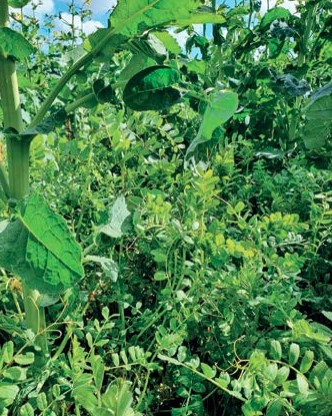
Having made the system work at home, we have been able to invest and expand, and now provide regenerative farming contracting services on several nearby farms, as well as farm management services on two neighbouring country estates. This has brought great synergies and economies of scale as we are able to share facilities, machinery and knowledge, and pool resources for specialist advice and trials. We also now incorporate an expanding livestock enterprise, which allows us to have control of this element of the system. Personally, I love the engagement and exposure of getting off-farm regularly, and I am now responsible for crops and livestock across a much wider range of soil types and management history than I would have had in a lifetime on just one farm.
Clearly farming is in for a bumpy ride ahead, but there can be few places in the world so well suited to raising crops and livestock than the UK- and I am confident that the most imaginative and forward-thinking farmers here have a bright future. I would encourage anyone interested in changing their farming system to read this magazine, be brave and make some changes. As our home-made drill shows- where there’s a will, there’s a way!
-

Optimising Soil Biology And Nutrition For Crop Production
Written by Joel Williams
When we begin to unpack the complex world of soil, of course there are many factors that contribute to the optimum functioning of a ‘healthy soil’ – be that chemical, physical or biological. That said, it is clear that soil biology specifically has played an instrumental role in catalysing the recent interest in soil health and with good reason – soil biological interactions are key in driving so many critical soil functions – be that nutrient cycling for plant uptake1, maintaining of soil aggregates and structure2, improving gas and water interactions2, protecting the plant from pests and disease3,4 and building organic matter5,6. Consequently, microbes are undoubtedly the unseen engine of soil fertility, and plant growth ultimately depends on a variety of functions performed by these diverse soil and root dwelling organisms.
Let’s be clear however, there are many knowledge gaps and much to learn, we still know so little – particularly about the ‘micro’ part of soil biology – but this microbiome represents a major untapped resource with extraordinary potential to help improve our production systems. Using this vast diversity of microbial allies, production systems of the future will deploy a combination of targeted inoculants coupled with specific strategies to manage this biome toward supplying nutrients, deterring crop pests and building soil fertility over time in a much more biologically driven and sustainable fashion than we do presently.
Some simple management strategies that can be implemented on farm to improve soil biological function include:
Maintaining a living root
• Keeping the soil covered with living plants ensures roots and root exudates are constantly feeding and supporting soil biota. Continuous cropping, green manures or use of off-season cover crops are ideal.
Organic amendments
• Composts or manures inoculate soils with beneficial biology as well as providing a medium of carbon and nutrients that supports ongoing soil functionality.
Biofertilisers
• Composts and manures provide a more diverse inoculant but there may be a time and place for specific cultured inoculants for a more targeted response. The use of rhizobia with legumes or mycorrhizal fungi with tree crops would be good examples of current success stories, but beyond these, the options are as vast as the microbiome itself. Of course many inoculants perform well under controlled conditions which doesn’t always translate well into field conditions. This is an area where improvements are needed.
Plant species diversity
• The use of cocktail cover crops, multispecies pastures and intercropping have all been demonstrated to enhance soil biological function in one way or another.
Minimising soil disturbance
• The use of no till, min till or strip till all help to minimise the physical disruption to the soil habitat.
Minimise excessive inputs
• Excessive use of fertilisers or pesticides can compromise biological function.
As important as soil biology is, it still has to function within the soil environment, equally a chemical and physical world. Consequently, we must still frame discussions on biology within this broader context, it is an interaction, after all. A soil chemistry test is a common tool that most farmers use to manage their chemical fertility so let’s consider a few important factors where chemistry and biology intersect. Soil chemistry is equally a complex topic and there is endless reading out there on this topic so rather than reinvent the wheel, I’ll just say a few points – perhaps a detailed discussion on soil chemistry is something that can be revisited in future.

It is common for standard soil analyses to only test for a handful of parameters – major nutrients and pH for example. However, a limitation or imbalance of any one of the essential nutrients can impact plant growth and development so it is prudent to ensure that both macro and micro minerals are all tested [at least somewhat routinely]. Don’t forget the lesser considered traces also – molybdenum, cobalt and nickel for example. These nutrients all have an important role in nitrogen metabolism and fixation. On that point, often overlooked is the fact that microbes in the soil need nutrients too – all the same macro and micro minerals. We focus so heavily on plant requirements but again using the example of Mo, Co and Ni – N fixing bacteria cannot fix atmospheric nitrogen without these important minerals and a limited supply to the bacteria can limit the overall potential of nitrogen fixation to the crop.
Most soil analyses will typically measure the plant available fractions of tested elements; however, soils contain significant additional reserves of minerals which are not necessarily, plant available, but still present, nonetheless. This pool of nutrients is typically referred to as the total pool and often exceeds the plant available fractions by tenfold or more. These total nutrients are insoluble, often locked up and consequently unavailable to the plant7. However, soil microorganisms have a myriad of strategies and modes of action to unlock and solubilise these total nutrients by excreting specialist enzymes and acids that strip the minerals off the soil surfaces, releasing them for subsequent plant uptake8,9. Herein lies one of the key reasons why implementing strategies to improve soil biological function can help reduce dependency on fertiliser inputs – by liberating these total reserves.
Of course, there is an important discussion to be had regarding potential extraction and depletion of these reserves, but this is a problem for perhaps around 100-300 years or more from now. I’m not suggesting let’s just forget about this, but the more immediate problem right now is nutrient enrichment of ecosystems, not depletion – it is my opinion this should be more of a focus for the immediate future. Farmers who are shifting their focus to soil biology are succeeding in cutting fertiliser inputs and still maintaining productivity or profitability. Of course, strategies like this should be undertaken with some care and within the context of the inherent soil type, environmental setting and as part of an integrated approach that focusses on many different strategies; this is typically the best path forward. I’d never promote cutting inputs without additionally implementing alternative strategies to substitute or hedge the process – slow and steady wins this race.
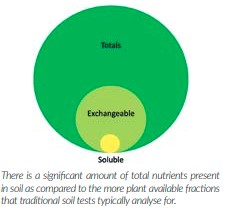
There is a lot to be said on this front and outlining some of these strategies to reduce inputs as part of a systems approach will form the basis of a future article no doubt.
References
1. Protists: Puppet Masters of the Rhizosphere Microbiome. (2018). doi.org/10.1016/j. tplants.2018.10.011.
2. Soil as an extended composite phenotype of the microbial metagenome. (2020). doi.org/10.1038/ s41598-020-67631-0
3. Organic management promotes natural pest control through altered plant resistance to insects. (2020). doi.org/10.1038/s41477-020-0656-9
4. Managing and manipulating the rhizosphere microbiome for plant health: A systems approach. (2017). doi.org/10.1016/j.rhisph.2017.04.004
5. Quantitative assessment of microbial necromass contribution to soil organic matter. (2019). doi. org/10.1111/gcb.14781
6. The importance of anabolism in microbial control over soil carbon storage. (2017). doi.org/10.1038/ nmicrobiol.2017.105
7. Opportunities for mobilizing recalcitrant phosphorus from agricultural soils: a review. (2018). doi. org/10.1007/s11104-017-3362-2
8. Phosphate solubilizing microbes: Sustainable approach for managing phosphorus deficiency in agricultural soils. (2013). doi.org/10.1186/2193- 1801-2-587
9. Phosphate-Solubilizing Microorganisms and Their Emerging Role in Sustainable Agriculture. (2019). doi.
-

Durham Farm Trials Put Solid Science Into Biological Farming
Detailed trials assessing a broad range of regenerative farming strategies on a progressive Durham farm are putting some solid science into efforts to improve arable sustainability by making the very most of above and below-ground biology.
Now into their third season, the Agrii Green Horizons trials with David Hankey on his family’s 160ha Dunkirk Farm, Birtley overlooking Gateshead’s Angel of the North are examining the impact of a wide variety of cover and OSR companion cropping approaches as well as in-field wildlife strips. Indepth assessments are being made of just about everything that can be measured to assess both their specific contributions and, more importantly, the benefits they bring to overall farm sustainability.

To address a serious deterioration in the health and condition of the sandy loam soils which became starkly apparent in the wet winter of 2012, David made the decision to ‘go regenerative’ the following year. Since then he has done away with cultivations, broadened his rotation, developed his own cover and companion cropping regimes and givenup using insecticides entirely. At the same time, he has been routinely applying around 25t/ha of compost and other manures to approximately half the acreage each year, more than replacing the value of the cereal straw – all of which is baled for the very valuable local market.
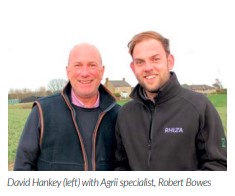
As well as dramatically reducing problems of surface erosion on the farm’s exposed and sloping ground, this approach has transformed soil health and workability, boosted organic matter levels to 5-6%, lifted worm counts to as many as 30 per spadeful, and generated a wonderful surface tilth to aid crop establishment. This has resulted in impressive 7.5t/ ha-plus light land spring malting barley yields from little more than 120 kg/ha of nitrogen and oilseed rape doing 4t/ ha from just 106 kg/ha, together with reductions around 80% in establishment diesel use.
“Taking the regenerative route has paid dividends from Day One,” says Mr Hankey. “Our soils have become that much easier to work. They don’t slump anymore and we seldom see water on the surface for more than a day. Putting life back into our soils has worked wonders for natural predators too. When we see aphids in our beans we no longer panic. Within a few days they’re being decimated by ladybirds.
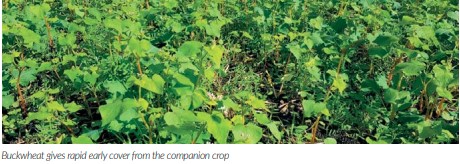
“We went into strip tillage with a contractor but invested in our own Claydon in 2015. It didn’t take us long either to replace proprietary cover crop mixes with our own designs – the best of which we’ve christened Jeremy (Clarkson) for its combination of speed and power. “Having tried a variety of no-till disc drills, we’ve finally settled on a Horsch Avatar multi-hopper model to give us greater flexibility to further develop our ‘whole food web’ regenerative ideas,” he says. “The science Agrii and its partners are bringing to our efforts means we’re able to do this with a very much better understanding of what’s going on ecologically.”
In the past year the Agrii team led by local specialist, Rob Bowes have been examining no less than eight cover crop mixes of three to 13 different species on a field scale after winter wheat and ahead of spring barley. Costing from £26 to £86/ha, these have resulted in very different levels of soil nitrogen, phosphate and potash as well as overall organic carbon, active carbon (available for soil microbes), total microbial biomass and earthworm counts.
“The more diverse mixes have generally delivered greater nutrient and biological benefits,” Mr Bowes reports. “While they have also tended to be more costly, this certainly hasn’t always been the case. Two of our three-species mixes, for instance, varied in cost from £26 to £54/ha, with the cheapest one making a noticeably greater contribution to the main soil nutrients and organic carbon (Table).
“Important in managing residues, fertiliser regimes and nutrient cycling, the mixes have also had very different carbon:nitrogen ratios,” he adds. “In general, the bigger the above and below ground biomass, the higher the carbon content, the slower the cover will release its nutrients and the more nitrogen it will use to do so. “We reckon a C:N ratio of around 30:1 offers the best balance between reasonably rapid residue breakdown and soil surface protection in most cases. Having said that, the best ratio for any particular situation will depend on the relative importance of the two priorities.”
Like catch crops ahead of winter cereals, rapid residue breakdown that ties-up as little N as possible is likely to be preferrable in oilseed rape companion crops, favouring lower C:N ratio species like legumes.
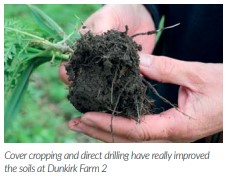
This, and Dunkirk Farm’s experience to date, is why the parallel companion cropping trials have primarily involved mixtures of buckwheat with vetch and berseem clover – plus phacelia and fenugreek to explore if these add anything in crop growth, nutrient contribution, soil structuring or CSFB confusion.
“As well as concealing the OSR from migrating adult flea beetles, our work confirms buckwheat is making a particular contribution to soil phosphate,” notes Mr Bowes. “We also believe its early flowering is helping support the wasps that parasitise both flea beetle adults and larvae.
“We’re finding the vetch that takes over as the dominant companion after the buckwheat dies back valuable in maintaining crop cover for pigeon deterrence, while the berseem clover is giving us great soil structuring. And, of course, both are contributing extra nitrogen in the spring and early summer.
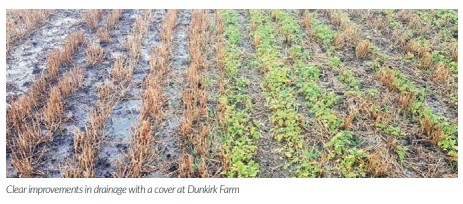
“Our comprehensive soil and tissue testing indicates the companions are delivering around 50kg N/ha to the crop. At the same time, we have recorded noticeably higher levels of phosphorus, potassium and sulphur, as well as boron and molybdenum in OSR leaf tissue testing from our companion cropped areas (Figure); levels which were particularly elevated where we had a more diverse companion mix and replaced seedbed DAP with a specialist protected phosphate Agrii-Start fertiliser.”
The visible differences in both crop health and grass weed control recorded in the Agrii trials at Dunkirk Farm have been especially impressive too. What’s more, adult flea beetle damage has been negligible in either of the two trial fields despite serious levels of grazing in the brassica component of adjacent cover crops. Which offers another valuable lesson in integrated farm-wide pest management. The covers in the nearby field, sown a couple of weeks later than OSR and its companions on August 12, emerged into the peak of CSFB migration and clearly acted as a useful trap crop.
“This sequence of sowing is an inevitable consequence of our rape going in after winter barley and covers following winter wheat ahead of spring barley in our six-year rotation,” Mr Hankey observes. “So, as the beetles arrive in September, we have reasonably well-established oilseed rape nicely sheltered by buckwheat on the one hand and fresh brassicas just coming through in neighbouring covers on the other.
“The scientists tell us flea beetles have a marked preference for younger plants, and this is crystal clear from the fact that our OSR volunteers are seldom touched. Getting companion and cover crops to work together in this way gives us what is basically a ‘pop-up rainforest’ harvesting sunlight and carbon while really make trap-cropping work.”
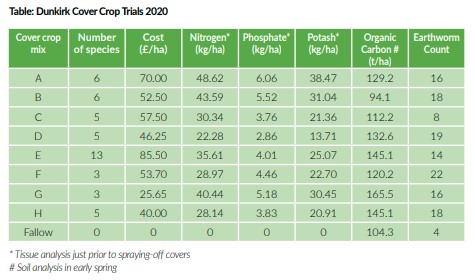
Another element of wider IPM looking very positive in current Dunkirk Farm trialling is wildlife strips within crops to provide readily available food and cover for predators. Three metre strips of bee and pollen and nectar mixes have so far been sown into the centre of two fields of spring barley, with an average of 25 carabid beetles/trap collected in each of their three pitfall traps last summer.
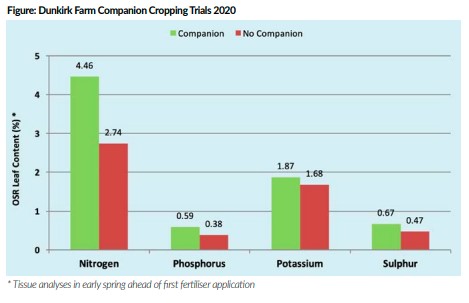
“That’s a healthy population for beetles the experts tell us we should only be finding within a few metres of our field margins,” points out Mr Hankey. “What’s more, we think they’re going for slug eggs – carabid caviar perhaps? We’re certainly not having to use nearly as many slug pellets these days.”
“There’s a lot more our trial work here and on farms across the country is looking to understand about these and other aspects of biological crop management,” concludes Mr Bowes. “As well as the best place to use covers and companions and the best species to include for particular circumstances, we need more intelligence on when and how best to establish and remove them; especially with soil types, at elevations and in other situations where farming conditions are more challenging than most.
-
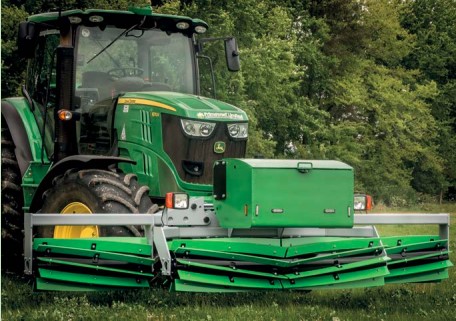
What We Can’t See
Written by Chris Fellows
Farming is becoming as much about what we can’t see as what we can. We as farmers already know that. Many of the articles in this magazine cover what can’t be seen and the complexity of modern-day sustainable farming. Greenhouse gases in the air can’t be seen, our crops and tramlines can. Soil carbon under the ground can’t be seen, but soil on the road can. Soil microbiology can’t be seen but cover crops can. The carbon footprint of an avocado can’t be seen on its packaging, but our livestock can.
Farmers are becoming ever more berated for what can be seen. The public are being told that these visible elements are bad. Livestock are bad. The public don’t even seem to argue that much with this hypothesis, because if agriculture is bad then it takes the spotlight off their own carbon footprint as they board their flights to Ibiza.
“look at all that damage being done” they say to their kids, as they drive them the mile to school while picking up a Costa in a disposable cup on the way. The blame game is a distraction for them, one that is very effective. It also damaging, as it stops people from making changes in their own lives that would make a difference to the planet. The truth is we all need to make changes, not just say we are doing the right thing or carry on taking private jets and then just saying you have bought an offset.
We as farmers know livestock aren’t bad per se. CAFO’s in the states certainly aren’t the way livestock is going to be raised in a sustainable future, but livestock, in a rotation with crops, grass or other animals can be a very effective way to generate a closed loop farm that requires the minimum of inputs and creates the maximum of financial output. Read “Dirt to Soil” by Gabe Brown, if you want to understand closed loop farming better, he explains it far better than I could in a short paragraph. But what is clear, livestock are part of a closed loop farm, therefore the simple statement that a vegan lifestyle will save the planet is wrong in my eyes.

However, perception will only change if the public start to appreciate farming for what can’t be seen. As these are our silver bullets, the truth behind the myths that are propagated in the media and online. This is the battle of perception we face. I toyed with whether to use the word battle, but the more I think about it, the more I think we are at war. If you look at the massive money institutions behind processed food and lab grown meat, it’s a battle that we are doomed to lose unless some action is taken to educate consumers.
We need to define our bullets and start to repeat them enmasse.
Henry Dimbleby’s National Food Strategy is our first bullet. He has said that processed food is the enemy of health. That ultra-processed food needs taxing, heavily. It causes long term health problems and just like cigarettes needs taxing at an appropriate level to the damage it is causing. The unhealthiest food on offer in a shop should not also be able to be the cheapest. The healthiest options should be the cheapest, preferably then priced by distance from where things are grown to the shop they are sold in. Meat substitutes are generally classed as ultra-processed food. Whereas there is not going to be a meat tax, which is good as sustainably grown meat is better for the diet of the general public (and their carbon footprint) than often the media portray.
Second bullet is being local. The UK has a very robust climate, day to day our weather is unpredictable, but year to year, we are in a better position than many countries to keep farming and even increase the list of products we grow as climate changes and the planet’s climate changes. In June this year, researchers created a “shortlist” of five nations most likely to survive the apocalypse. The UK was ranked 3rd and Ireland 5th. The number one criterion was how much land is being used for farming compared to the population. Our climate, regardless of the changes we will see in the next 50 years will remain very suitable for farming a lot of land.
Thus, we can and should grow more of our own food. Certainly, more than 60% of it. Looking at the national Food Strategy, we need to grow more fruit (and nuts) and reading about the agronomic benefits of including trees on your arable farms (detailed by Mike Abrams in this issue) then why not have more fruit trees. But this fruit ideally needs to be sold locally. While Waitrose is very open to the discussion around local food, I think the best way is direct to consumer. More farms need a little farm shop that the public can buy from. More of the public need to go onto farms and see how food is grown sustainably. More of the public need to understand this complexity in farming.
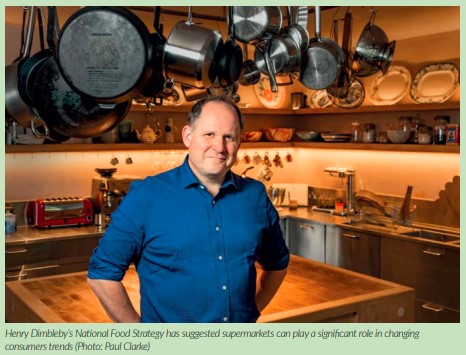
Third bullet. Education centres. We now have a few agricultural education centres around the UK. Agri-Epi, Agrimetrics, NIAB, Daylesford and FarmED to name just a few. We need to use these better to educate the public. Which won’t be easy as the public don’t think they need educating, that’s what the media and Facebook are for! An obvious target is to get more schools to visit these centres, but kids also love junk food. They won’t change their diets on their own. We need to get more adults through the doors. I don’t think that needs to be on the basis of learning about farming, we could just offer these spaces to businesses that need meeting and conference space. The people then that come in the door can be influenced. But we should also all give up some of our time to organise events at these places. Get 50 people toegther and talk about how we farm. Assuming they all have families then just the readership of this magazine could influence over 2 million people from just doing one event each. I know talking to a group seems like a massive ask, but its easier and less daunting than you think. You really do understand you chosen subject and the public love the idea of regenerative agriculture.

Fourth Bullet. We need to create Ag tech that makes farmers more profitable, not just the ag tech companies more profitable. I recently read that Agri-Epi feel the key driver for any agricultural business they support is GVA. I would have loved to have been able to tell them why I feel this is wrong. I guess I am, right now. GVA (Gross Value Added) is the measure of the value of goods and service a company produces. Yes, businesses need cashflow, yes they need to make money, but GVA is not king and should not be treated as such. The GVA of each business is what contributes to GDP on a national scale. At a governmental level GDP growth is good, so you could say their attitude to GVA and Ag Tech companies meets national needs. But GVA is not good in every situation. Just take the reusable cup mantra that coffee shops promote. Using paper cups would drive higher GDP, but its not seen as good to do something so disposable. GVA that serves no purpose is not good. And this unfortunately is the history of farming. GVA has risen a lot in agriculture, but farmers have no reaped the benefit of this.
Going right back to the 1862 when Lincoln created the United States a Department of Agriculture. (see boxed information from the USDA at the end of the article). A statement that change would drive farming forward, change the way American’s farm. It did, synthetic fertilisers, crop protection products all have enabled farmers to produce more. But I’d challenge whether any of it has made farming more financially sustainable or profitable. Farmers aren’t better off, but agricultural companies are more profitable. Some of the world giants in financial terms have been built based on these changes. Ag Tech needs to start being measured in whether it makes farmers more profitable, not just give farmers the ability to grow more. GVA is not what I would be measured success as – sustainability is.
Fifth bullet, talk about complexity. The public has a view of farmers. A stereotype that we have all seen on many a TV show. It involves a flat cap or chewing straw and a character you find hard to understand. Clarkson’s Farm is also guilty of this a bit. He is certainly demonstrating how hard farming can be, but he isn’t demonstrating the finesse that goes on behind the scenes. Why a complex rotation is good for both a farmer’s pocket only in the long term and not always in the short term. That bumper yields can be achieved at the expense of the soil health in the short term. But this isn’t the right approach. That farmers look for complex rotations that will maximise revenues over 20 years. I think Clarkson’s Farm was guilty of this mistake.
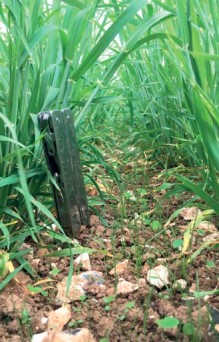
He was advised to cultivate land that hadn’t been cultivated for years as it would get him a better yield that first year. He talked about the yield penalty. While it created some fun, it really isn’t what we should promoting. Complexity is. That farming is incredibly complicated to do successfully (in fairness I think Mr Clarkson has highlighted this element rather well). When given the chance, make yourself sound like a rocket scientist.
Sixth bullet, food needs a documented carbon footprint. I’ve saved this to last. What currently can’t be seen is the carbon footprint of food the consumers buy. Unless this is fixed, I don’t think we can win this battle. The good news is that consumers want this information. They want to buy food grown carbon neutral. Carbon neutral beef exists, but we have the mantra that livestock is bad and we need to eat less meat forced on us. Having it on the packaging that a product is grown carbon neutral changes all that. Consumers can buy what they want and the added element is that they will pay more for carbon neutrally grown food. However, the bad news is that the supermarkets have zero interest in doing this.
The cynic in me would say this is because they know the highest polluting foods have the most profit margin in them, but I am a cynic. Either way, I think it will require government intervention to do this, but doing it would change the face of food, eating and as that moves back, how we are rewarded for farming. The other problem is that the mills and processors don’t seem to care either. At the moment, carbon neutral wheat is dumped in the same pile as all other wheats. Despite it having more value, the mills don’t even care or ask farmers what their carbon footprint is or if they are carbon neutral. Once consumers require answers (and thus get an education on the food they buy) these questions will have to be asked downstream and the cream of UK farming will get paid better for what they grow. But you can tell this story.
You will note that you the reader can only help with a few of these bullets. When you are next asked about your farm, please talk more about what can’t be seen than one can. This complexity will help educate whoever you are speaking to. It’s a good habit for us all to get into. We can all be ambassadors for complexity.
-

Why Producing A Microbial Inoculant With A Johnson-Su Bioreactor Could Increase Productivity On Regenerative Farms
Johnson-Su bioreactors have become all the rage on some regenerative farms. But what are they and how do you use them?
By Mike AbramIf first lockdown was all about building a firepit from spare discs, last autumn saw a surge in the construction of JohnsonSu bioreactors being showcased on social media.
A Johnson-Su bioreactor is a method of creating fungal-rich compost, and was developed by Dr David Johnson, adjunct professor at California State University’s Center for Regenerative Agriculture and Resilient Systems, and his wife HuiChun Su.
In his research looking at biological soil enhancements for the Institute of Sustainable Agriculture at New Mexico State University he found the ratio between fungi and bacteria in the soil is critical to a plant’s productivity in healthy agricultural systems.
As ecosystems increase in their productivity from bare soil to forests, the balance changes from a bacterialdominant to a fungal-dominant system, as well as going from low to high carbon content in soils, he explains.
“Most agricultural systems are currently bacterial-dominant, low carbon and low production. Weeds grow very well in these systems, but their purpose is to begin to transition poor soils up this ladder of succession,” he says.
But ideally agricultural soils need to be around 1:1 fungal:bacteria for arable crops and vegetables to do well. “In order to stay on that rung of the ladder, we do need some controlled disturbance.”
That disturbance can be created by grazing animals, which with their activity and dung, create a microbiological inoculation event that moves with the animals. Dr Johnson has tried to mimic that system on arable land. “Not everyone can have or want grazing animals in their system.”
The result was the Johnson-Su bioreactor. “It produces a fungaldominant and biologically diverse compost. The bioreactor mimics what happens to dung and organic matter on prairies – it’s approximately 70% moisture content, doesn’t require turning, shouldn’t freeze and is always aerobic.”
Built using easily sourced, relatively cheap materials (see box), it’s placed on a pallet to allow good airflow from below, keeping the process aerobic, together with the six air columns created with pipes during the construction and filling phase. “The pipes are pulled out after 24 hours as the pile completely stabilises itself with newly developed fungal hyphae and actinomycetes.
Filling takes three to four hours, and he recommends material is wet when it is added. He uses a plastic bath tray with a wheelbarrow tipped up so wet material can drain back into the bath for this process. First, he adds dry, if necessary chipped or chopped material into the water bath to soak it, and then with a fork transfers that to the wheelbarrow to drain, before moving it to the bioreactor via buckets.
Once filled the compost can reach temperatures of 70C usually in the first week, depending on the material used to fill it, but after it returns below 27C, around 100 Red Wiggler composting worms are added.

“At that point they will survive. If you’ve done it right by the time you’ve finished it will be full of baby worms that have eaten everything that has been usable.” An irrigation system is used to make sure the compost is kept at around 70% moisture. In his hot environment he irrigates once a day for about a minute. “One way to judge if you are at 70% moisture is to squeeze it with your hand – you should just about be able to squeeze a drop of water out.” To completely make the compost takes a year, allowing the microbial diversity to increase significantly. Following Dr Johnson’s design produces around 300kg of finished product from 900kg of wet material.
In initial greenhouse trials he found the compost produced double the plant growth compared with any of eight other commercial composts, despite it being low in nitrogen, potassium and phosphorus, which are critical for growth. “So we thought OK, it’s organic matter. Organic matter is important, but that did not correlate well to plant growth either,” he says. However, he found the fungal:bacterial ratio was a strong predictor of plant growth, with the Johnson-Su compost being fungal dominant.
Further experiments examining how fungal to bacterial ratio affected plant partioning of carbon and nitrogen found only 3% of the energy the plant captured during photosynthesis went into the plant in a bacterial-dominant system compared with 56% in a fungaldominant system. “In our agricultural systems we’re currently about 11% efficient, which suggests we should be able to increase productivity about five times to reach that 56%.” To test that he started small plot trials using the compost at low rates as a microbiological inoculant. On desert sand soils, the biologically enhanced agricultural management (BEAM) treatment increased productivity of winter cover crops by 4.6 times over four seasons, from just a single application in year one.
Similar results were then seen in cotton and chile field trials, with an increase of 0.24% soil carbon / year, and around 100% improvements in yields, before farm-scale maize trials in 2019 compared conventional maize with 256 units of N applied with two BEAM approaches – one with 2kg/ha of an extract of the compost injected into the furrow with no additional N applied and the other with just 15% of the N. “In year one the BEAM + 15% nitrogen matched the productivity of the conventional approach, and was $121/acre more profitable, while the BEAM only strip suffered a 2% yield loss but was still $86/acre more profitable than the conventional approach.”
While most of Dr Johnson’s trials have been carried out using an extract, a Belgian farmer, Gerard Dumont de Chassart used it as a seed dressing on radish, peas, millet, sorghum and alfalfa cover crop after creating a slurry again with a doubling of productivity in above ground biomass. “The slurry should be about the consistency of pancake batter, at about 1L/ bag of seed. Plant it straight away. Planting it damp is much better, keeping the microbes living until you get them into the soil,” he says.
“The inoculant kick starts the system. In the first years you might need to inoculate each year, but I don’t think you have to do it forever – once inoculated, it’s the management after that – keeping a cover crop growing all the time, for example – that’s essential,” he concludes.
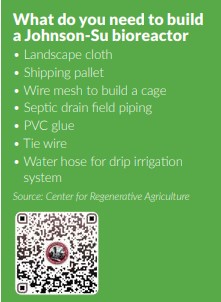
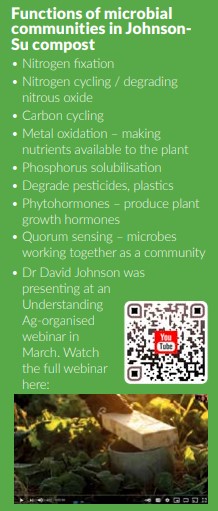


-

Farmer Focus – Adam Driver

The mental weather continues on from the last time I wrote something for this magazine. Stuff looks pretty good. I thought I would do a candid evaluation of how crops are looking to start with.
Winter Wheat – pretty good on the whole, difficult drilling conditions and some poor headlands. We drilled a chunk very early. Blackgrass control is reasonable with the farm looking quite clean. There is a general smattering after OSR which is disappointing but not yield sapping, two fields are quite bad and will lose some yield in the worst patches. These areas also correlate to some drainage issues where they sat wet over the winter. Obviously one of these is directly outside my house and tormenting me on a daily basis. Crops are clean of disease, perhaps we overspent on fungicides this year. We are working hard to understand the relationship between nutrition and disease. We have been SAP testing with novacrop and doing the usual stuff like brix, ph etc. I do not have enough confidence in it and myself yet to do it wholesale but we are making in roads and will push harder next year. It is a fascinating subject and shows real promise agronomically.
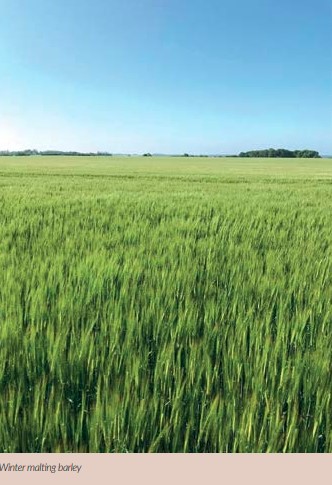
Winter Malting Barley – Looks amazing, drilled early and very little blackgrass. I have been repeatedly told that barley cannot to be direct drilled as it likes loose soil. It is a great crop to point you towards compaction issues. Bearing in mind some of this land has not been move to any depth for 5 years the only issues we have found are a few wet areas suggesting we need to mole drain one 9ha field.
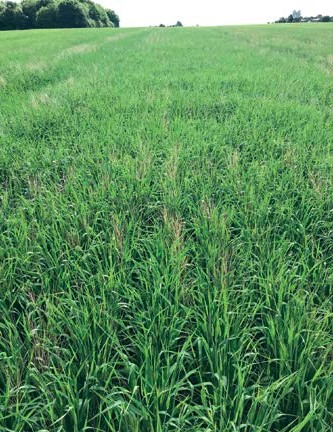
OSR – Good and bad. Good after early harvested wheat and barley, not good to average after spring barley. We actually took the decision to spray on 13ha last week, it was just not going to be worth it with weeds growing which would compromise the following crop. We have subsequently mole drained and will plant a cover crop into those 3 fields. Spend has been kept very low and prices are high so it should be a nicely profitable crop. I do hate it though and am considering dropping it again. Blackgrass always seems to creep back into it and it can be so fickle.
Spring cereals – Difficult start but now looking okay. Learning more and more how to deal with cover crops on this land so they do not become a hindrance to establishment. Loads of broadleaf weeds this year! It is vital we get these right as they are now such an important part of our system. I have heard of some fair yield drops in spring cereals where the cover crop has been managed wrong or contains cereal based components.
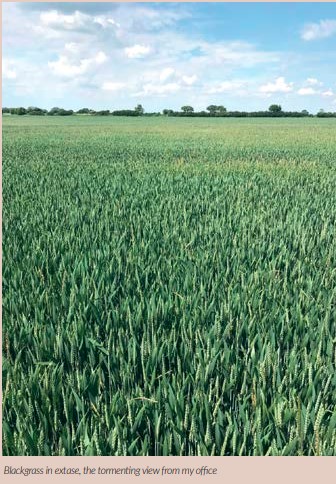
Thankfully due to the wealth of knowledge sharing online we have mostly been able to avoid these issues.
Looking Ahead
Driving around and talking to farmers from around the UK, it seems like this is the worst year for blackgrass in a long while. As said earlier we aren’t too bad but far from perfect. It really does reinforce the view that we are only just about keeping it in check even with more varied rotations and lower output crops. Years of continuous wheat or very tight rotations relying on chemical controls have certainly left many areas in a muddle. It shows to me the importance of having lower cost systems. We cannot grow as much output anymore, as the easy chemical options are simply not there. We have to grow lower output in order to survive agronomically, but many are still geared up for growing loads of wheat and rape. The overheads need to fit the output. I have used blackgrass as an example, as its so in your face and pertinent this time of year, but the same thinking counts for all manner of agronomic issues. The “Chasing the Red Queen” analogy comes to mind when thinking about all this.
With BPS going it brings the stark reality of what was fit for purpose ten years ago no longer is acceptable. Coupled with the traditional chemical toolkit shrinking or no longer working, rising machinery prices, environmental scrutiny around fertiliser and other farming practices, emerging carbon markets, ELMS and the increasingly odd weather. It seems to me that lower cost “regen” systems, focused on margin rather than simply yield are going to be vital. Saying that there is also no point in saving pennies to lose pounds and most importantly we need to grow good crops. When you start adding things up, for example mid tier cover crops, carbon selling, lower input costs (a bit of a slow burner but many are making good in roads) and a sizeable reduction in overhead costs it really starts to make high cost systems look very questionable. We can all grow the same crops for the same or very similar yield whilst putting much less capital at risk in the process, and get paid for providing tangible benefits as opposed to being given money simply for owning land as is the current subsidy.
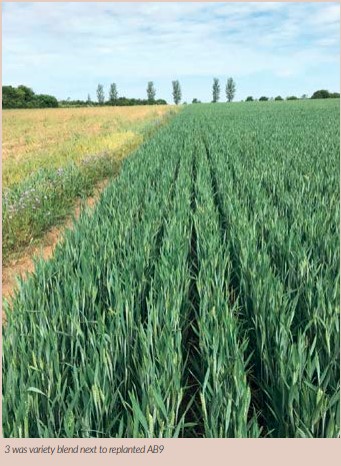
There should be absolutely no reason we cannot achieve all these other benefits whilst still growing decent yielding crops and feeding people. So often in farming circles production and environment are talked about as two different things, whereas the reality is they can and should be in harmony. As we farm for other people it has been interesting discussing the future with them and the various land agents who are also involved. Thankfully most of them are fully on board with what we are doing. Discussing the loss of BPS, ELMS and carbon credits etc has proven very useful and it makes these relationships so much easier when you are on the same page.
I always say it in these articles, but I am so excited about the future of agriculture in this country.
Wishing everyone a successful and safe harvest!
-
Lincoln’s Agricultural Legacy
Written by Wayne D. Rasmussen and published with kind consent of the USDA National Agricultural Library
On May 15, 1862, Abraham Lincoln signed into law an act of Congress establishing “at the seat of Government of the United States a Department of Agriculture.” Two and one-half years later, in what was to be his last annual message to the Congress, Lincoln said: “The Agricultural Department, under the supervision of its present energetic and faithful head, is rapidly commending itself to the great and vital interest it was created to advance. It is precisely the people’s Department, in which they feel more directly concerned that in any other. I commend it to the continued attention and fostering care of Congress.”
Lincoln’s own background was the pioneer farming and rural life typical of the outer edge of America’s westward-moving frontier. His early years were spent on farms characterized by pioneer exploitation rather than by settled cultivation. The 300-acre tract in central Kentucky on which his loghut birthplace stood was too poor to be called a farm. As a boy, he lived on a 30-acre farm. Because of hills and gullies only 14 acres could be cultivated.
In 1816, the Lincoln family moved to southern Indiana to 160 acres of marshy land. After 7 years, Lincoln’s father had 10 acres of corn, 5 of wheat, and 2 of oats in cultivation. The young boy was hired out to do general farm work, to split rails, and to work on a ferry boat. In 1830, the family moved to land along the Sangamon River in Illinois. Soon afterward, Lincoln left the family and began life for himself.
This farm background, on what was then the western frontier, and his years as a country lawyer made Lincoln, during the 1850’s, a representative of the frontier, the farmer, and small town democracy. On September 30, 1859, Lincoln addressed the Wisconsin State Agricultural Society at its annual fair in Milwaukee. This was the only extended discussion of agriculture he ever made. He began by praising agricultural fairs as a means of bringing people together. However, the main purpose of the fair was to aid in improving agriculture.
Lincoln spoke of the desirability of substituting horsedrawn machines for hand power, and the potential usefulness of steam plows. He urged more intensive cultivation in order to increase production to the full capacity of the soil. This would require the better use of available labor. Lincoln contrasted “mud sill” and free labor, identifying “mud sill” laborers as slaves or hired laborers who were fixed in that situation. Free laborers, who had the opportunity to become landowners, were more productive than the “mud sill” workers.
Free labor could achieve its highest potential if workers were educated. As Lincoln put it: “…no other human occupation opens so wide a field for the profitable and agreeable combination of labor with cultivated thought, as agriculture.” His endorsement of education and his belief that farmers’ interests were of primary importance indicated Lincoln’s interest in agricultural reform. After saying that farmers were neither better nor worse than other people, Lincoln continued: “But farmers, being the most numerous class, it follows that their interest is the largest interest. It also follows that that interest is most worthy of all to be cherished and cultivated — that if there be inevitable conflict between that interest and any other, that other should yield.”
When the Republican Party nominated Lincoln in 1860, two of the planks in the party platform were in accordance with ideas that had been advocated by westerners for many years. The first was the demand for a homestead measure. The second was advocacy of Federal aid for construction of a railroad to the Pacific Ocean. Two other proposals which had been advocated for many years — grants of Federal land for founding of colleges to teach agriculture and engineering and the establishment of a federal Department of Agriculture — were not mentioned in the platform. However, all four of the proposals were enacted into law in 1862.
The first of the measures to become law established the Department of Agriculture. In his first annual message to Congress on December 3, 1861, Lincoln said: “Agriculture, confessedly the largest interest of the nation, has not a department nor a bureau, but a clerkship only, assigned to it in the Government. While it is fortunate that this great interest is so independent in its nature as to not have demanded and extorted more from the Government, I respectfully ask Congress to consider whether something more can not be given voluntarily with general advantage…. While I make no suggestions as to details, I venture the opinion that an agricultural and statistical bureau might profitably be organized.” Instead of a bureau, Congress established a Department to be headed by a Commissioner. The act was so broadly conceived that it has remained the basic authority for the Department to the present time.
The Homestead Act, approved by the President on May 20, 1862, provided for giving 160 acres of the public domain to any American or prospective citizen who was the head of a family or over 21 years of age. Title to the land was issued after the settler had resided on it for five years and made improvements on it. The settler could also gain title by residing on the claim for six months, improving the land, and paying $1.25 per acre. The Homestead Act did not achieve all that its proponents had hoped, but it stood as a symbol of American democracy and opportunity to native-born and immigrant alike.
The act granting western land and making payments for the construction of the Union Pacific-Central Pacific railroad was signed by Lincoln on July 1, 1862. The two sections of the railroad joined at Promontory Summit, thirty-two miles west of Brigham City, Utah, on May 10, 1869. This completed a rail connection between the Atlantic and the Pacific and opened new areas of the West to settlement. The Morrill Land Grant College Act, donating public land to the States for colleges of agriculture and the mechanical arts, became law on July 2, 1862. Every State accepted the terms of the act and established one or more such institutions.
After President Lincoln signed the bill establishing the Department of Agriculture on May 15, 1862, he received much unsolicited advice, particularly in the columns of the farm press, on the appointment of the first Commissioner of Agriculture. Some urged the appointment of a distinguished scientist, others an outstanding “practical” man. A few periodical editors were certain that one of their number would be the best choice. However, Lincoln turned to Isaac Newton, a farmer who had served as chief of the agricultural section of the Patent Office since August 1861.
Newton was born in Burlington County, New Jersey. He grew up on a farm, and after completing his commonschool education, became a farmer in Delaware County, Pennsylvania, near Philadelphia. Newton was a successful, progressive manager, whose farms were regarded as models. He also developed a pioneer dairy lunch in Philadelphia and a select butter trade as outlets for his farm products. Newton sent butter each week to the White House; and he and his family maintained a close friendship with the Lincolns. Subsequently, Lincoln gave him full support in managing the Department.
In his first annual report, Newton outlined objectives for the Department. These were: (1) Collecting, arranging, and publishing statistical and other useful agricultural information; (2) Introducing valuable plants and animals; (3) Answering inquiries of farmers regarding agriculture; (4) Testing agricultural implements; (5) Conducting chemical analyses of soils, grains, fruits, plants, vegetables, and manures; (6) Establishing a professorship of botany and entomology; and (7) Establishing an agricultural library and museum. These objectives were similar to the charges given the Department by the Congress in its legislation establishing the new agency.
Newton, during the nearly five years he served as Commissioner, made progress in achieving these objectives. The basis for a library existed in the book and journal collection of the Agricultural Division of the Patent Office. This collection, comprising about 1,000 volumes, was transferred to the new Department. Appropriations for library material began in 1864. The first librarian of record was Aaron Burt Grosh, a clergyman. Little is known of his library work. He is best remembered as one of the founders of the National Grange.
Although Lincoln’s primary problem during his Presidency was preserving the Union, the agricultural legislation that he signed was to transform American farming.
By Wayne D. Rasmussen
Chief, Agricultural History Branch (retired 1986) United States Department of Agriculture
-

Farmer Focus – John Pawsey

I am currently bathing in post-harvest bliss. I haven’t actually been through our results in detail yet but I am aware of the general highs and lows. With twelve months of observation of what has looked good and what could have looked better, I am hatching a plan for harvest 2022. September is my favourite month of the year; I get to have another go. The slate has been wiped and I have a new piece of white chalk.
So, the last twelve months?
Harvest 2021 gave us our first crop of oilseed rape on the farm since we converted our last piece of land to organic in 2007, and apart from annoying a group of organic oilseed rape growing Scottish farmers, claiming that I had grown the first crop of organic rape in the UK ever, it went far better than expected. Not so for my pioneering claim which suffered national protestation on social media, forcing me to limit my assertion to, “I have grown the first ever crop of organic oilseed rape in the village of Shimpling, Suffolk”. I felt it best to name the county as there is a Shimpling in Norfolk where the residents share a single eyebrow and everyone is terribly closely related and you really don’t want to piss them off.
To say that the whole crop was a success would be a lie as there were areas of pigeon damage on a former World War 2 runway where topsoil is non-existent and other areas where the companion crop of Berseem clover forgot that it was supposed to be frost intolerant and climbed out of the top of the crop. Fenugreek was also in the mix but didn’t really make much of an appearance. In the bits of the field that we did have a decent crop it yielded around two tonnes to the hectare which has given me the courage to have another go. Last year’s crop was planted in midAugust and had no inputs whereas our recent planting has had 7t/ha of dried digestate from British Sugar and has companions of Kora Buckwheat and Tabor Berseem clover. Ideally, I would like to cold press the crop on the farm and become a millionaire by Christmas 2022.
We had proper success with combining cover cropping with a non-inversion tillage trial. I took a sixteen hectare field and drilled a cover crop (brassicas and clovers) on one half and let the other regenerate with the diversity of weeds that we have managed to collect over the last twenty years with no herbicides, channelling the Newman Turner approach that,“The weed is your friend”. The Newman side really went for it and produced a staggeringly impressive range of the thistle and dock family as well as a brilliant display of charlock. All was on show for my neighbours from the major A road that dissects the farm. To hide my blushes, the natural regeneration and cover crop were grazed by sheep over the winter and then lightly cultivated in a frost in early February and then sown with spring oats at the end of that month.
During the subsequent months the line between the two trials became increasingly impressive. Firstly, the apparent increased vigour from the cover crop side and the subsequent extra tonne in yield at harvest, but equally as magnificent the flocks of “Small brown jobs” on the Newman Turner side, feasting on the thistle seeds and the inevitable disappointing results in the combine tank. I’m not sure if you know this but historically young thistle shoots, stripped of their spines, were added to salads and the flower heads were used like artichokes? Yet another product, along with the organic oilseed rape oil, that could be sold in the virtual Shimpling Park farm shop furthering my ascent up the ladder of a well-known broadsheet’s rich list.
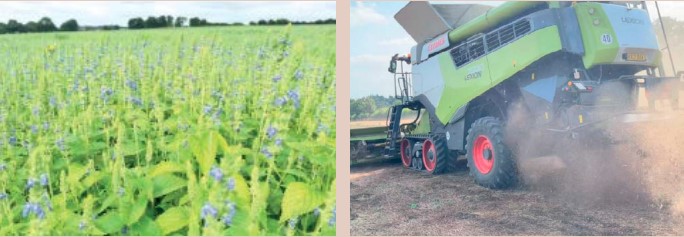
That opportunity aside, buoyed by the evident weed suppression and fertility building, both factors contributing equally to the yield increase, we are repeating the trial on a much larger scale this year, fuelling our journey to divert our attention from the plough as a weed management tool. It’s definitely been a year for the thistle at Shimpling. Keith Banham from the Sandringham Estate did a loose trial a few years ago with subsoiling and thistle control with some positive results. Here, we have seen much reduced thistle numbers in our tramlines where we have subsoiled and so we are doing a bit more work on that to see if that is a thing.
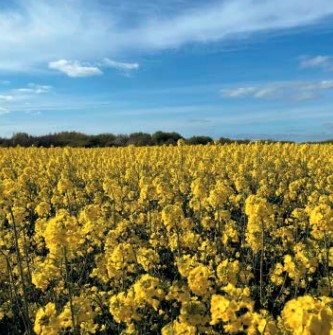
I also grew my first crop of organic Chia this year. Using the past tense is inaccurate as at the time of writing it is still showing an impressive array of blue flowers and so I should say that I am “still growing” my first crop of organic Chia. Current thinking is that it’s harvesting date will be in October and so the pressure washer has not yet visited the dusty panels of our combine. I’m seriously considering making the claim that I have grown the first ever crop of organic Chia in the UK. I’ll probably test it out on Twitter first.
I have grown vetches on the farm organically in the early 2000s, but gave them up due to inconsistent yields and a price that I felt did not reflect the risk we were taking, but this year I was persuaded to grow a field of them for seed. Vetches are extremely hard on the combine cutter bar as they go as flat as a piece of paper two days before harvest and can be difficult to get the crop to flow evenly though the combine. You also have to empty the stone trap every ten meters. This year we had a Claas Convio Flex on demonstration (Google it or see a post I put up on Twitter) which I think will revolutionise cutting crops with a strong relationship with gravity. It was amazing. It could also open up some more niche opportunities for us, yet again increasing the product range of that imagined Shimpling Park farm shop.
Having said that I have not yet had an indepth analysis of harvest yet, I am aware that it has not been a great year in term of grain output. Another wet winter, frosts continuing into late April and another drought at the beginning of spring is never going to be a recipe for bumper yields. Although we have got the boldest and brightest wheat, barley and oat grains that I have seen for many years, the berries are small which must be something to do with the unusual year.
There’s nothing impressive about average, but that is the year that we have just had. It’s been a year of consolidation of thought, more honing of what we do well and learning from what we do badly. Here’s to harvest 2022!
-

Drill Manufacturers In Focus…
VARIABLE WEATHER HIGHLIGHTS NEED FOR A RESILIENT SYSTEM WHICH REDUCES RISK.

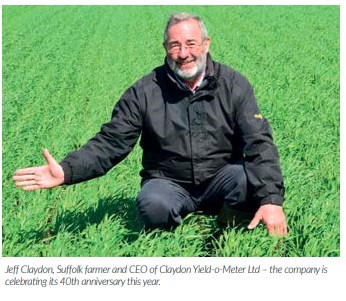
28 May 2021
2021 marks the 40th anniversary of Claydon Yield-o-Meter Limited, so naturally we would have liked nothing more than to welcome visitors to our Open Days to view our farm and factory but, as in 2020, that has not been possible. The ongoing uncertainties over the coronavirus and government policy have again forced us to postpone any physical event and so this week we have been filming the 2021 Claydon Virtual Open Day. It’s not the same as being here in person but Dick Neale, Technical Manager of Hutchinsons, had plenty to say when he visited us and we recorded several short videos which you can view on the Claydon website (www. claydondrill.com/open-days-2021).
Farming is all about doing the right things at the right time, but that has been particularly challenging this year due to the extraordinary weather. In contrast to the last two years, April was cold and very dry, with more frosty nights than most of us can remember, while May has been below-average in terms of temperature but above-average for rainfall. These conditions have tested farmers’ resilience in planning or adapting field operations. They have also emphasised the importance of being able to get on the land to apply ag-chems and fertiliser at the right time, tasks which we find much easier where the Claydon Opti-Till® System is used because the soil is so much more supportive and takes the weight of machinery with little damage or compaction.
Perhaps more so than any other, this season has highlighted huge variations in soil health and crop development, as well as the need to operate a resilient system which reduces the impact of extreme weather and produces consistently high yields. Dick and I discussed all these factors during filming and our Virtual Farm Tour highlights how crops established using Opti-Till® have performed this year. Spoiler alert – they look excellent! With favourable prices and the potential for exceptional yields, I am hopeful that this harvest could be the best in years.
Claydon’s 40th birthday
At the time of writing, we are preparing to celebrate the 40th anniversary of Claydon Yield-o-Meter Limited, which was formed in July 1981 to manufacture the first-ever on-combine grain monitoring device which I had invented and evaluated on our farm the previous year. Taking on the management of the family farm when I was 16, my father still used to question whether I had spent too much money on crop establishment. Armed with the data from the Yield-o-Meter, I could see how effective treatments were and provide my father with the return on investment figures.
A revolutionary product for its time, the Yield-o-Meter provided an accurate reading of how many tonnes of crop were harvested that minute, hour, day, month, and year on a display in the combine cab. It was fitted to hundreds of combines throughout the UK and Europe, winning a Royal Agricultural Society of England Silver Medal in 1995. We sold the Yieldo-Meter right through to the late 1990s when yield mapping functionality was built into combines. We have been measuring yield religiously ever since, to make sure we know what’s working on farm and what’s not. In 1995, we also introduced into the UK market the Furrow Cracker, which helped the weather break down ploughed land, and hundreds were sold in the UK.
The Claydon range developed further with the introduction, in 2003, of the V-Drill, our first direct strip tillage drill, which dramatically reduced the time and cost of establishing crops. What set it apart was the unique leading tine and following A-share for which Claydon has become famous. By providing ideal conditions for seed establishment and root development it produced yields not previously seen with direct sowing systems.
The Claydon SR (Stone Release) drill introduced in 2006 featured spring-type instead of shear-bolt stone protection together with much greater inter-row spacing. It is now 18 years since the V-drill was first launched and 15 years since the SR made its first appearance, but due to their simplicity, solid build quality and easy, low-cost maintenance, all are believed to still be in service and the few that come up for sale command high prices.
In 2009, the Claydon Hybrid replaced the SR. Incorporating Claydon’s leading tine technology, the Hybrid has been continually refined and remains the cornerstone of the unique Claydon Opti-Till® System, a holistic approach to crop establishment which delivers consistent, high yielding crops at low cost for maximum profitability. Launched in 2013, the Claydon Straw Harrow provides a fast, low-cost method of creating a fine shallow tilth which encourages volunteers/weeds to chit quickly after harvest and enables them to be controlled mechanically prior to establishing the following crop, reducing reliance on glyphosate. It also helps to spread crop residues evenly and minimise alopecic patches in the following crop, as well as reducing slug populations and destroying their eggs.
Claydon’s product range continued to develop with the introduction of the Hybrid T drill, a trailed version of the linkagemounted Hybrid seed/fertiliser unit, in 2014. Two years later, we launched the 6m TerraStar®, a fast, low-cost light rotary cultivator often used alongside the Straw Harrow, then in 2018 the TerraBlade Inter-Row Hoe, a low cost, mechanical method of controlling weeds in band-sown crops. The important thing for our customers is that all Claydon machinery is developed on a working farm, by farmers, for farmers, then thoroughly tried and tested under real farming conditions in a real farm environment before being brought to market. The Claydon farm has not been ploughed since 2002 and my brother Frank establishes around 340 hectares in an autumn drilling season with a single 6m Claydon Drill and a single tractor, then goes on to drill another 1250 hectares on contract.
Over the last 40 years Claydon Yield-o-Meter Limited has grown as a company and continues to expand its facility at the farm in Suffolk. Still entirely family-owned, we employ 50 staff and export 70% of production to 35 countries, from Europe to New Zealand. Despite the challenges of the past year, the company is on track to achieve a record turnover in 2021. Over the last 40 years Claydon Yield-o-Meter Limited has become one of the best-known names in the UK agricultural machinery manufacturing sector and despite the challenges of the past year is on track to achieve a record turnover in 2021. Still entirely family-owned, we employ 50 staff and export 70% of production to 35 countries, from Europe to New Zealand.
Spring on the Claydon farm
This year, 50 per cent of our 340ha is into first wheats after beans. The remainder is split between two break crops, oilseed rape and spring oats. Everything is a week or so behind where I would expect for the time of year, but looks excellent, including the 55ha where we had our cover crop trials. This area was subsequently sown with WPB Elyann (KWS) spring oats, a crop which is easy and relatively inexpensive to grow but often produces a margin which compares well with winter wheat. Drilled on 9 March, they look exceptional.
In the last issue of Direct Driller magazine, I discussed our trials with cover crops and promised to update you on any differences that became apparent. Long story short, at this stage it is too early to tell, with little in the way of visual or physical differences between the areas where our normal programme of stubble management was used and those which followed a general purpose over-winter cover crop mix (Hutchinsons MaxiCover). One of the reasons for this could be that after almost 20 years of using Claydon Opti-Till® direct strip seeding our soils are in exceptional condition, healthy, resilient and with excellent drainage, so perhaps cover crops are of less benefit here than they might be where this is not the case.
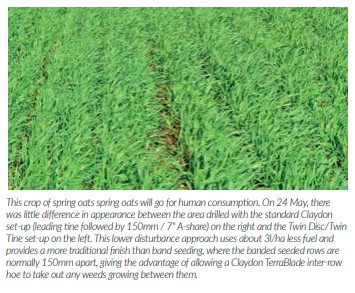
April was so dry that any crops which went into soils which had been over-cultivated would have sat there until rain arrived in May, so many which I have seen on other farms are very backward, patchy and will struggle to deliver economic yields. Regardless of whether we used the standard Claydon leading tine and A-Share, or the Claydon Twin-Tine low-disturbance arrangement with twin front cutting discs, seed was drilled into moisture and grew away immediately.
I discussed cover crops with Dick Neale while filming our Virtual Farm Tour and you can see him comparing soil samples from areas with and without cover crops in the video on the Claydon website. From my point of view the jury is still out as to whether, in our situation, they bring enough to the party to justify the cost. We will have to wait until harvest to see whether there are improvements in crop yield or quality, which ironically is exactly why I developed the Yield-o-Meter 40 years ago.
Keeping it clean
In April, the soil was so dry that we went over all 200ha of wheat at least once and some of it twice up to GS31 with our 6m TerraBlade inter-row hoe. This low cost, completely mechanical method of weed control is an excellent way of supplementing the effectiveness of the various herbicides we apply and makes sense at a time when chemical control methods are tending to become both more expensive and less effective. The TerraBlade makes a real difference and we have measured a 65%-70% reduction in weed numbers by using this approach, greatly reducing the risk of them seeding and resistant species developing.
On 26 May, the day before filming our Virtual Farm Tour, I and several members of the Claydon team visited Agrii’s trials site at Stow Longa in Cambridgeshire, where different establishment systems are being evaluated. Although the work is at an early stage, clear benefits in favour of the Claydon Opti-Till® System over conventional deep cultivation methods and a no-till approach are already evident. While we were there, Agrii’s Trials Manager Steve Corbett and Head of Agronomy Colin Lloyd emphasised the importance of operating a flexible farming system and a resilient method of establishment. They also stressed the critical role of soil health in achieving consistent crop performance and the need to make transitional changes between systems based on scientific evidence rather than ‘gut feel’, something which is especially important when looking to change to a low-disturbance or zero-disturbance system.
What Steve and Colin had to say is well worth listening to, so we are posting a video on the Claydon website as part of our Virtual Open Days 2021 series. Agrii plans to host a series of open days at Stow Longa in July, so you will be able to get a better idea of the differences then. Because of the current restrictions, numbers will be strictly limited, and you will need to pre-register, but it would be worth making the effort to see their work for yourself.
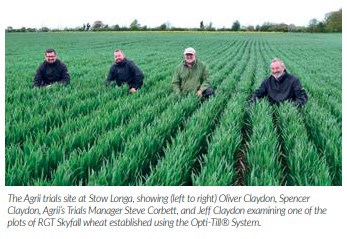
Oilseed rape returns
At the end of May, our oilseed rape is looking as good as I have ever seen it and that is very pleasing because not so long ago, we were forced to give up growing this key crop because of the damage caused by Cabbage Stem Flea Beetle. This season we are comparing four varieties, one conventional and three hybrids. LG Aspire is an exceptional conventional rape but was much slower to establish and then suffered badly from the spring frosts. It has made up much of the shortfall but still lags behind the hybrids in terms of development.
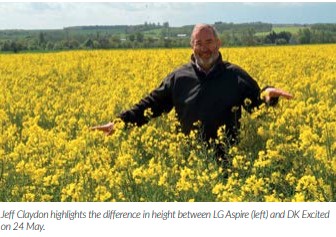
The vigour of DK Excited, DK Extremus and DK Exstar were very apparent in terms of crop canopy early in the season and they have continued to look much more advanced. Although the margin has closed in the last few weeks it is still significant, as can be seen from the accompanying photograph. Even though hybrid seed is more expensive the additional cost could well be covered by a relatively small increase in yield, so this represents the direction of travel and next year we will only grow hybrids. The other important point about DK Excited and DK Extremus is their TuYV resistance, a major consideration given its increasing prevalence. Oilseed rape is such an important crop and provides such a good entry for wheat that it is good to see it back in our rotation. High prices on the back of a much-reduced UK oilseed rape area this season, combined with the prospect of 5t/ha yields, should make it a very profitable crop, but harvest will reveal all.
Wheats looks wonderful
Most of the winter wheat we are growing this season is LG Skyscraper from farm-saved seed which was cleaned by a mobile processor and treated with Beret Gold (Syngenta). Wet conditions and later drilling encouraged us to up the rate slightly to 350/m2, which paid off because every field looks tremendous.
In one field we are comparing various approaches to stubble management and establishment, the results being quite revealing. Where no stubble management was carried out before the catch crop was drilled using the standard Claydon set up (leading tine followed by an A share) the volunteer beans prospered. In the area next to it, which was drilled at the same time and with the same set-up, very few volunteer beans were present due to the effectiveness of an intensive stubble management approach using the Claydon Straw Harrow. Wheat drilled within the catch crop area using the standard tine and A share was much stronger and greener initially due to the improved drainage and much less affected by a postemergence herbicide. It has subsequently looked the best all season.
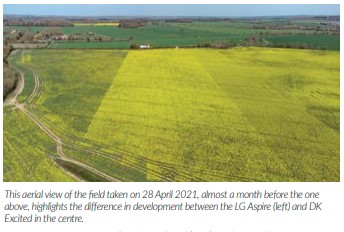
Where the lower-disturbance Twin-Tine option was used the crop is still good, just not quite as good as with the Claydon leading tine set-up, although this does not necessarily mean that yield will be impaired. We will be able to see the result come harvest but using the Twin Tine system does mean that it is not possible to use the TerraBlade to mechanically hoe between the bands and that makes a big difference to weed populations.
On this farm, the conventional leading tine and 180mm (7”) A-Share consistently works best and I would always recommend that most customers should start with this set-up. Every situation is different and for those who have experience of strip seeding and want to use a low disturbance approach when soil health and weather conditions are favourable, we offer a choice of LD options, all of which can be specified on new Claydon Hybrid drills or retrofitted to existing models.
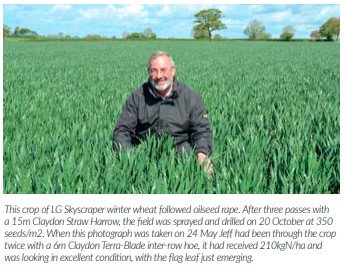
During our Virtual Farm Open Day, I discussed all these approaches with Dick Neale, and we have posted footage on the Claydon website, so you might like to see what you think.
In the next issue of Direct Driller, I will give you further details on the various trials and look ahead to our plans for the autumn.
-

Getting Paid For Carbon – Farmers’ Top 10 Concerns
Andrew Voysey, Head of Sales & Carbon, Soil Capital

Seemingly at every turn, getting paid for carbon is the talk of the town. A flick through r e c e n t editions of Direct Driller is proof enough! As the independent agronomy firm that launched Europe’s first certified and multinational carbon payment programme for farmers, we at Soil Capital are certainly part of that momentum. Our scheme was launched in France and Belgium last year. It targets mainly arable operations and in the first season we signed up around 150 farmers from the more than 800 that expressed interest.
As we expand further in those countries, as of this Summer, we have also now brought the programme to the UK. We’re delighted to already be seeing British growers join the ranks of their European peers earning carbon payments each year. But this market is still very new. Every day, we talk to farmers who are (quite rightly) full of questions about how it works. In this article, I address 10 of the most common concerns we hear.
- There isn’t enough agreement
on how to quantify carbon
It is true that finding the right balance between modelling the impacts of farming practices and measuring soil carbon directly is a subject of ongoing effort. Scientists and technology developers are constantly bringing out new and improved approaches. This evolution will continue for decades, and so it should. We engage with it closely, but it is not realistic for most farmers to be experts in all these approaches and pick winners.
You can be confident in a scheme if it can answer three questions on this topic.
1. Is the independent standard they use widely recognised, ideally internationally?
2. Is the quantification method they use already widely respected in the marketplace?
3. Have serious companies already bought carbon via the scheme?
As an example, our programme (called Soil Capital Carbon) has been validated by an independent auditor against a standard from ISO (International Standards Organization). We use the Cool Farm Tool, backed by over 100 of the largest global food and beverage companies, in conjunction with soil analysis at the beginning and end of the five year certificate generation period. And when we launched, a range of companies including Cargill had already pre-purchased more than €500,000 of certificates.
You should insist on such clarity from all schemes you examine.

- I should wait because: the
market is young
Quite right, the market is in its early stages of development. Those not comfortable with some level of risk will be sensitive to this. But the devil is in the detail on the question of making a long-term commitment now. Is the scheme you are looking at clear about your rights to exit whatever contractual commitment they ask you to make? More importantly, are they clear about the consequences for you if you do so, such that you understand the cost of any flexibility they offer?
The challenge schemes face is that they have to balance farmer flexibility with buyer confidence. There are different approaches. Some schemes will impose a “claw back” mechanism so that if you break the contract, some of your previous carbon revenues might be owed back.
Our decision has been that farmers should be able to exit Soil Capital Carbon at any point without a fee, claw back or legal restriction. We manage market expectations by operating a so-called “buffer” – simply put, 20% of certificates you generate each year are set aside and not sold for you until 10 years later. If you leave our programme, the only consequence is that you forgo those future earnings as those certificates have to be written off..
- I should wait because: the
carbon price will rise
Analysts certainly expect the price of carbon to rise in general over the next decade, with some views pointing to quite dramatic hikes over this period. As in all markets, I am sure there will be ups and downs on the way. The real question is – once you are in a scheme, are you protected against drops in the carbon price and how do you benefit if it rises? We have found it important to be crystal clear on this topic. In our case, we commit in our contracts to protect farmers from downside risk and expose you to upside opportunity. This means we insist that your carbon will only be sold if it can generate you at least £23 per tonne and that, however high the market price of carbon goes, you will always get a fixed percentage of 70%.
- I should wait because: the
supply chain will want carbon
neutral crops
It is encouraging that farmers are seeing growing interest in carbon from the supply chain. However, I often hear the view that this means farmers shouldn’t get trapped selling their carbon to someone else, if the buyers of their crops will want it instead. There are two important realities here. First, you sell your carbon on an annual basis. It isn’t like selling mining rights for a lifetime! Companies are buying the claims related to the annual flow of carbon that you are either storing additionally in your soil or that you are no longer emitting. Provided the scheme has adequate flexibility to pivot to new buyers, you are positioned to adapt to changing market circumstances.
Second, if the supply chain is serious about carbon neutral crops, it will want credible, quantified and verified evidence that your crops are indeed carbon neutral. In other words, you will need to be using approaches like those developed by our programme and others. And if you are already monetising improvements in your carbon profile when the supply chain demands arrive, you are in a stronger negotiating position to insist that the supply chain compensates you fairly.
- I should wait because: the
Sustainable Farming Incentive
will kick in
As is widely known, the Sustainable Farming Incentive (SFI) is in pilot mode today, with full details of how it will work in practice only to be confirmed once the few hundred farmers participating in the pilot have given feedback in the coming years. Nevertheless, the Government has stated that it expects the SFI to be compatible with private sector initiatives that pay farmers for carbon. The sorts of farming practices set to be incentivised by the SFI overlap strongly with those that will improve your carbon profile. Our experience as farm managers and advisors tells us that transitioning farming practices over 5 to 7 years is more prudent from a risk management and profitability perspective. It therefore makes sense to start now, generate carbon revenue from the private sector, and be well positioned to access SFI payments when they are fully rolled out in the years to come.
- My farm isn’t suitable
because…
It’s correct that the specifics of your farm matter – size, soil type, crops in your rotation, whether you are conventional or organic. Credible schemes should offer you honest advice based on the experience of real farmers. For example, we know that farms with less than 100 hectares of arable land are likely to find the cost of our programme difficult to justify, so we advise smaller farms to look carefully at their potential earnings before making a decision. Some schemes, including our own, offer simulation tools for this purpose.
Some farmers seem to believe that carbon payment schemes are only suitable for organic systems. This is certainly not the case in our programme, where we are seeing very traditional, conventional operations, organic farms and everything in between finding opportunities to improve their carbon profile – whatever they produce.

You should find the scheme that works best for your operation – because some may have constraints – rather than shoehorn your farm into a scheme even if the fit is not there.
- Joining a scheme will force me
into certain practices
Some will, yes. Most common is the requirement to commit to never plough. While a small proportion of farmers can make this commitment, this can obviously be an unacceptable constraint for most. Our view has always been that carbon payment programmes should never prescribe to farmers how to farm. Local context always matters and nobody knows that context better than the farmer and their local advisors. It is important to make it clear what practices will improve your carbon profile as these are the sort of practices that you will want to continuously improve for a scheme to make sense for you: replacing synthetic inputs with organic inputs, minimising soil disturbance, maximising ground cover with living plants, diversifying your rotation and integrating agroforestry are all changes that help improve the carbon profile.
In our view, good schemes should then provide detailed analytics, benchmarking, case studies and simulators to help you make the right decisions for your farm. But they certainly shouldn’t prescribe practices.
- I already store carbon – these
schemes don’t benefit me
Yes, be careful. If you have been direct drilling consistently for a number of years and increasing the organic matter you feed into your soil, you may well be storing carbon overall through your arable operations. If a scheme requires you to show improvement only on your own historical practices to generate carbon revenue, this could create a perverse incentive for you to “reset” your carbon profile with the plough for a few years and then revert to your previous practices. We have already heard of such stories in Europe.
There are alternatives. For example if you join Soil Capital Carbon with practices that result in net sequestration of carbon which you initiated systematically within the last 20 years, we use an alternative baseline to your own historical practices. This is derived from analysis of common practice in your region and is typically a slightly emitting baseline. This means you can be rewarded for continuing to apply these good practices.
- I don’t want to give companies
buying my carbon the right to
pollute
This is something we hear often. And it’s understandable – if farmers are bearing the risk of changing their practices to improve their carbon profile, why should another company benefit without doing anything to reduce its own emissions? This is really a question about carbon offsetting. When it is companies in the same food supply chains as farmers buying the carbon, the dynamics are quite different. My advice to farmers is to check with schemes what claims they are allowing companies with no supply chain relationship to the farmer to make, because all are not equal. A scheme can enable full carbon offsetting to companies – whereby they can use carbon credits generated by farmers to offset their own emissions – if that scheme uses a standard that is recognised by the International Carbon Reduction and Offset Alliance (ICROA).
In the UK today, there are no such schemes available because the relevant standards haven’t been fully adapted for a UK context. Soil Capital Carbon, which generates carbon certificates against an ISO standard, therefore does not allow companies to offset their emissions if they have no supply chain relationship to you. Instead, they get what the leading NGO in this space calls a “results based claim” – the right to talk about their support for your carbon improvements, but without using that to formally offset their emissions.
- I don’t know how much I could
really earn
I find myself instantly sceptical when a scheme presents carbon payments as the new “road to riches” for farmers. Often, this kind of marketing material doesn’t reveal the assumptions made about soil types or pace and scale of practice change and should be treated with caution. Schemes should present real case studies from farmers already in their programme, including the specificities of how they are achieving their earnings. Even better, schemes should provide simulation tools so that farmers can test the earnings potential of their specific circumstances and ambitions before they make a commitment.
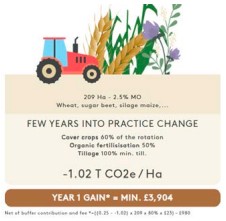
When we work through this process with farmers we speak with, the right kind of response is that the earnings on offer from Soil Capital Carbon are modest but meaningful. Without doubt, for the right farm profile, the programme more than pays for itself. The incentive to generate new revenue is very often a welcome reward for the effort and risk of undertaking new practices. But new revenues from carbon should be seen as the cherry on the cake of practice change. Even more significant are the cost savings and operational resilience that can be achieved as soil health is continuously improved.
There are plenty of other questions that we field from farmers about the carbon markets and our particular programme every day. You should be full of such questions and you should do your due diligence carefully. But with the right perspective on how to navigate the offers that are emerging, this does not need to be overwhelming or paralysing. On the contrary, an exciting world of new opportunity is emerging and there are plenty of reasons why it makes sense to get involved sooner rather than later.
- There isn’t enough agreement
-

Farmer Focus – John Cherry

This season has been a bit of a revelation for me on the farm, as we haven’t applied any fungicides on any crops at all (at the time of writing, at the end of May). We’ve got a couple of fields of Zyatt wheat which will get a spray soon, as there is a bit of Rust showing, but the rest of the crops look fantastic. Thanks go to Tim Parton, who’ll be familiar to readers of the magazine, for showing us how it can be done.
Of course, 2021 started off as a ‘low disease’ year; for crops that is, it’s been a bit different for humans. But I think we do need to ask ourselves why we are growing crops that need a four fungicide programme just to get through to harvest. Also, what is the collateral damage?
Some years ago a chance conversation with Clive Bailye and his agronomist Richard Hammond gave me the nudge to stop using insecticides on the farm. The results exceeded all my expectations, in that we didn’t miss them in the slightest and we found we could stop using molluscicides ( slug pellets) as well, probably because we now have a thriving population of ground beetles which keep the slugs in check. We have the odd yellow patch caused by BYDV, but no more than that… again I suspect that we have enough insect predators to keep the aphids that carry the virus at a sensible level.
We’ve still tried growing OSR, relatively successfully in terms of avoiding flea beetle attacks, but ultimately the crops weren’t worth the effort. Companion planting with berseem clover, buckwheat and vetch enabled the rape to get away without too much bother and helped confuse the pigeons over-winter, but there would always be enough beetles, gnawing away inside the plants, to ensure a disappointing yield. The vetch seed which we combined with the rape, made the operation worthwhile. Any temptation to spray insecticides was offset by the fact that all the sprays available were useless at controlling the pest, whilst clobbering the beneficial insect populations.
So, having got away with making two classes of biocides redundant on our farm, we were ready for the great fungicide challenge. The more I find out about the fungus kingdom, the less I want to use fungicides. In much the same way as with insects, where it is estimated that there are 1700 beneficial species (from the farmers point of view) to every damaging species, plants rely on many different sorts of fungi to stay healthy, whilst only a small number of species are pathogenic. We don’t know the half of it, so we apply the precautionary principle…don’t spray unless you have to.
It’s always worth remembering that these pathogenic fungi aren’t ‘evil’, they are nature’s way of tidying the place up, constantly checking to see which plants are healthy enough to thrive. Our job as farmers should be to give our crops the best chances in life, so they don’t attract the attention of the clean-up squad.
To this end, we have been spraying on some biological brews, which are supposed to help the plants fight off fungal attack, by promoting plant friendly fungi as well as feeding nutrients. So far, I’ve been very impressed; the combine yieldmeter will give us an interesting picture of any differences in output between our various trial plots (misses…) Our soils are improving all the time, but we don’t feel quite ready to drop nitrogen fertilisers yet, although we’ve got a few trials going on with different rates. The permanent pastures and herbal leys are doing very nicely without N, but where we’ve cut it out altogether on the arable, the wheat does look a bit yellow. Again, time will tell.
I’m sure we can find a way of farming without N, in fact I think we need to. Nitrogen fertilisers require a lot of energy to make (via the Haber-Bosch industrial process) and consequently have an enormous carbon footprint. They also have a damaging effect on soils by upsetting the C:N ratio and as a result encourage soil creatures to chomp through the soil organic matter. Whilst we’re busy dissing artificial N, we should mention that they have an appalling take-up by crops, 40% of what we apply is used, if we are lucky, the rest evaporates, upsets the soil ecosystem or washes away. They are not cheap either, so all in all there is some work to be done here. We’ve cut rates here to a max of 150 kg/ha on wheats and will continue to nudge them down.
We haven’t applied any base P or K on the farm here for 15 years or so, and indices are holding up or increasing. For some reason, a lot of farmers find this very annoying and insist that we are mining our soils of nutrients. Which we are, but there is so much ‘unavailable’ P & K tied up in our clay which becomes available when the fungi are left alone to do their stuff. All these soil creatures are ultimately benefiting other animals higher up the food chain, we’ve got various birders who come counting birds through the year. They are increasingly excited by the numbers of species and individuals they are seeing: hundreds of yellowhammers, sky larks and corn buntings for instance and swarms of linnets and charms of goldfinches. It all helps to make farming a really pleasurable occupation.
Reading this article through, I can see that it sounds like a smug git going on about how clever he is, but I’m just reporting how it is…we’ve had plenty of cock-ups and we sit at the bottom of the Groundswell bench-marking group league table, which is put together by Gary Markham of Land Family Business. But we’re still profitable and increasingly financially resilient; all the others in the bench-marking group are even better off. It is a very happy story.
There will be many more like it at Groundswell this year. We won’t have many, if any, speakers from abroad so there will be a great focus on exciting developments in the UK. I hope we’ll see you there.
-

Farmer Focus – Clive Bailye

R & R…
Harvest 2021 was the second in succession where the combine saw no rapeseed through its 12m header. At least this time it was planned, as not an acre was planted following the 100% loss of our 2020 crop. This we redrilled with linseed after finding most of the stems were infected with CSFB larvae in the spring.
The 2020 loss underlined and reinforced the importance of our low stakes approach to growing this high-risk crop. At the point of redrilling the area with spring linseed less than £25/ha had been spent, with farm saved seed and herbicide being the only input to that point. I have spent as much on over winter cover crops in the past, and although OSR is not exactly the best of cover crops with its lack of mycorrhizal fungi association, at least it had been capturing important sunlight and water helping build organic matter from its August drilling date until its destruction in April.
Up until 2020 we had got away with things as far as CSFB was concerned, and we had been getting decent yields at low costs. I had seen growers further south and east lose crops to the beetle following the neonic ban but until that point crops in our area seemed to escape relatively unscathed. I had started to wonder if our more diverse farming system, which at that point had used no insecticide at all for 10 years, could be the reason. Had IPM built us higher beneficial populations that were keeping the beetles and other pests under control? Was improved soil health leading to improved plant health, making the crop less attractive to pest attack? It could have been a great story, but sadly the 2020 loss didn’t have the hoped for happy ending.
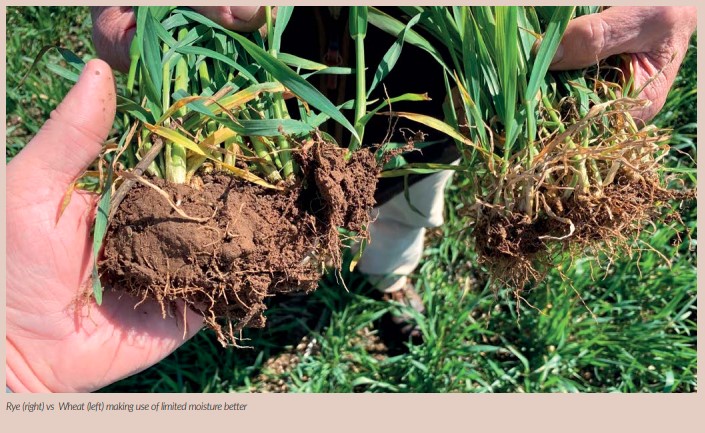
Stopping growing OSR is an easy decision to make, but what to replace it with is a whole lot more complex. There is not exactly a great choice of consistently viable break crops, and importantly markets for them, suited to UK growing conditions. Our cropping is already quite diverse and depending upon markets and suitability of land break crops have included winter beans, spring beans. spring oats, spring linseed, lupins, millet and even peaola (a pea and spring OSR companion crop). All have their pros and cons, but all are far less consistent than the cereals. These break crops have yields which are far more weather dependant than agronomic genius, they suit our low input, low risk approach meaning that even in years where yield are disappointing the margins are rarely negative.
Our farm business has really focused hard on minimising fixed cost structure and a big part of that involves spreading labour and machinery over as long a season and as large an area as possible maximising use of available resources. The OSR crop was valuable in getting a good chunk of drilling out the way early, easing workload peaks for crop protection and fertiliser application and most importantly of all providing us with a reasonable area of early combining before the main event that is wheat harvest.

We needed a replacement that shared some of these logistical characteristics and grain rye seemed to a good fit. We had been involved in some trail work for KWS a few years previously so had some experience of the crop and knew there was nothing particularly difficult about its establishment, agronomy or harvest. The market for grain rye was all that had really held us back from growing at scale in the past so when I learnt that £30 below feed wheat contracts were available we decided to give a couple of hundred acres a go.
Hybrid varieties bred for grain and better standing characteristics seem to have developed rapidly in the last few years. They can be drilled early, and harvest is early. Seed was expensive (especially for a farmer used to farm saving nearly all his seed!) but with nitrogen and crop protection costs significantly lower than wheat it’s a reasonably cheap crop to grow. The lower Nitrogen requirement is particularly attractive as synthetic N is not beneficial to soil life or environment, anything we can do to reduce its use can only be a good thing, especially with nitrogen prices at present. 2020 is the first year we have sold our carbon sequestration via the brilliant Gentle Farming platform and the lower N use directly reflected in a lower carbon footprint that in turn gave us more ISO certified carbon certificates to sell.
Straw yields are high, at least double that of wheat so if trying to increase a soils organic matter content rapidly it’s a great solution. What I found most remarkable was its use of water. The crop came through winter well and received its first split of nitrogen and growth regulator in late February. Then followed a very dry spell from mid-March, soils dried out quickly and wheat and barley crops were showing signs of drought stress. One of our rye fields had a lot of volunteer wheat in it, and the rye had developed more biomass so you would be more affected by the dry conditions. However inspection of the roots showed very clearly how much more efficiently the rye was using what water was available to it. The wheat roots were totally dry with no soil attached where as the rye roots were still surrounded with soil that was clearly still holding ample moisture, this could be a very valuable characteristic on our lighter soils where moisture often ultimately restricts our yields.
Rye yields were claimed to be above those of wheat, but in this first harvest here we found it has averaged about the same in a year where our yields have been in general very good. With the lower growing cost and lower sale prices considered I think the gross margin calculation will be similar or possibly slightly lower than our first wheats but similar to second wheat this season. If in future seasons we can access the higher than wheat yields that are claimed (and I think we would see these in a more moisture restricted season) then it could possibly equal or even better first wheat margins. Year one of a new crop is always a steep learning curve and I sure we have plenty of room to improve !
Happy as I have been with rye its not a break crop so doesn’t really replace the losses of rapeseed to the rotation but as a crop that doesn’t suffer from Take-all I plan to grow it continuously on a couple of blocks of land and have doubled the acreage this year. I hope we will see rapid increases in soil organic matter and will monitor this carefully.
With an area of winter barley harvested in late July and this most valuable of straw baled and removed quickly in ideal, dry conditions I just couldn’t resist entering the OSR lottery again for harvest 2022. We had a tonne bag of farm saved seed kept back, now 2 years old that was quickly germination tested and direct drilled along with 30kgs / ha of placed DAP fertiliser using our Horsch Avatar drill on 250mm spacings. On the 10th of August in near ideal conditions we nudged 125mm on our 12/36m controlled traffic farming system to place rape seed directly between last seasons 250mm stubble rows and held our breath.
The results were as perfect as we could wish for and by September 1 we had a near perfect looking crop of OSR, free of CSFB and slug damage all at low stakes of under £10/ha spend. Will it make it to harvest 2022? Well, that’s still in the hands of pigeon, slug, CSFB larvae, hail, or any of the other many things beyond our control that make this crop the arable farmers equivalent of keeping sheep. Oh, how I have not missed this crop! but I can sleep well knowing that if it does ultimately fail it will at least fail cheaply !
-
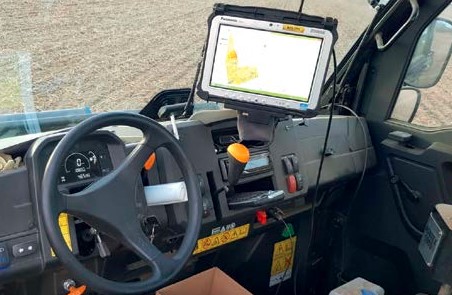
A Deeper Insight Into Soil
Over the last two years there has been an evolution in the way that soil nutrient mapping is carried out. This has been driven by the launch of TerraMap by Hutchinsons in 2019. Terramap came at the perfect timing for farmers looking for that next level of accuracy in understanding their soils in order to reap the most benefit for their crops through nutrient mapping and soil conductivity scans.
TerraMap uses gamma-ray radiation technology to deliver resolutions of over 800 points/ha, providing high definition mapping of all common nutrient properties, pH (e.g. % clay, % sand, % silt), soil texture, organic matter and CEC as well as elevation and plant available water. The results from TerraMap are used to create maps within the Omnia precision farming system which can then be overlaid with additional field information such as black-grass, yields and so on, to create the most accurate, consistent and detailed variable rate plans.
The infield process of collecting the data is carried out in 2 very simple steps; scanning by driving a light weight all terrain vehicle fitted with the sensor over a field, and then taking soil samples to allow for each scan to be used to create the individual map layers.

Manufactured by Canadian company SoilOptix, TerraMap’s scanning technology is based on a scaleddown version of airborne sensors that originates in mineral prospecting, and has been used in other countries successfully. The TerraMap sensor is noncontact and pre-calibrated upon manufacturing. It’s an entirely passive sensor. The standard field practise is the scanner is mounted roughly 600-700mm above the ground and the vehicle is driven around 10-12 mph and at 12m swath widths. The sensor is measuring gamma radiation that is being naturally emitted form the soil. Specifically it is measuring Caesium -137,Uranium-238,Thorium-232 & Potassium-40.
Traditional zonal and grid soil sampling, do not by their sheer methodology provide the level of accuracy that TerraMap offers. With the grid system you create a 100x100m grid across the field, taking samples at each point. A map is then generated that extrapolates properties between the data points.
A zonal system uses an electro-magnetic (EMI) or conductivity scanner to assess soil properties into zones of similar character. Samples are then drawn from within each zone.
The resolution isn’t good with the grid system – the way the smoothing is carried out by the software between data points can be quite crude. The problem with EMI scanning is repeatability – it’s massively affected by soil moisture, so the picture you get of your soil in Sept can be completely different to a scan taken in April. The zonal sampling resolution also tends to be poor – on average one sample represents 2.5ha. As it’s an entirely passive sensor, you can travel from harvest through until March without disturbing an autumnsown crop. It picks up the unique radioactive signature emitted by the soil that’s influenced by its nutrient and mineral content. That signature can be translated back to the core properties.
Just like EMI scanning, the sensor has to be groundtruthed, so soil samples are taken within each field to help the algorithms align the radioactive signature to the actual soil properties. But unlike EMI, that signature remains the same and unique to the point in the field, regardless of moisture, temperature, tillage state or crop cover. Repeatability is one of the key aspects we tested before we launched TerraMap. So several fields were scanned just after harvest when they were dry and in stubble, and were re-scanned as soon as they were fit to travel in early spring. The results are virtually identical – we have real confidence the scanner is measuring something repeatable.
It’s also a one-pass system. Just like an EMI scan, the field is travelled in 12m bouts. The initial scan gives you a map of the raw data points that are displayed on a tablet in the cab. But unlike EMI, the on-board software then uses that information to highlight points within the field to return to for detailed analysis. Before leaving the field, the sensor is returned to a number of pre-defined sampling points. At these points, the spectrometer picks up a more detailed signature and we take a representative soil sample for later analysis.
Terramap is available at two service levels: standard will deliver ten map layers to the grower, directly replacing other soil services currently available. This brings in sand, silt and clay content, giving individual layers of percentage content, as well as a texture map, calculated using the industry-standard soil texture classification.
For Omnia users, it will be the soil texture layer that’s used in combination with seedbed condition, weed and slug pressure to generate a variable rate drilling plan.
In addition, phosphate, potash and magnesium index maps are returned, along with pH, while an elevation map is also generated. The nutrient and pH layers will directly inform variable rate application maps. Premium service provides information or layers that you don’t get from a standard precision soilsampling service such as levels of the nutrients calcium, sodium, sulphur, manganese, boron, copper, zinc, molybdenum and iron. It’s seen as unlikely that growers will use the maps to variably apply micronutrients. More likely, the information will be used with tissue testing, for example, to identify potential areas of deficiency and to target areas for further investigation.
Organic matter levels and cation exchange capacity (CEC) are two further layers of “good background information” returned by Terramap. Again it’s unlikely growers will use the information to directly spatially apply inputs, although it may indicate areas that warrant further investigation. The final layer is plant-available water based on clay, silt and organic matter content. In the first instance, this could help modify irrigation scheduling, but we believe the information can be used to tailor agronomy closer to crop potential, spatially enhancing overall performance.
The value in the maps may come through the barometer they offer on general soil health, informing how to build resilience into the arable system, and as a basis for applying for future subsidy payments linked to provision of public goods.
TerraMap Carbon
This spring has seen a further exciting development in TerraMap- the ability to provide the most accurate baseline measurement of both organic and active carbon in the soil and is now available to UK farmers. Despite growers coming under increasing pressure to look at their carbon footprint in response to the NFU’s commitment for UK farming to achieve Carbon net zero by 2040 – until now there has been no accurate means of measuring carbon in the soil – and unless you can measure carbon there is no way it can be managed.
The pressure to manage carbon is only going to become greater as other industries are already showing positive change. As an industry UK Farming plc is in a unique and enviable position as farming activities can make positive changes to carbon, which most other industries are not able to do. This challenge comes at a time when the arable industry is facing great change in the light of the loss of basic farm payment, and many growers may well be questioning the importance or relevance of carbon management as potential profit margins are threatened.
We need to move away from seeing carbon footprinting as a burden or simply a tick-box exercise and see that this is beneficial, as a proxy measurement for efficiency and profitability of a farm as well as simply a measure of waste.
So it’s clear that there are benefits such as lower input costs to having a negative carbon balance before even getting to the Carbon bit. A reduced carbon footprint can only be achieved through more efficient fertilisers, different technologies, better soil carbon management or considering the energy used in storage, so it’s a win– win on all levels. In light of these challenges, we have been investing heavily in developing services and technologies that can be utilised at farm level to allow growers to work towards these goals- and the development of Terramap carbon is an exciting and unique development that reflects this approach.

Terramap Carbon is available through the standard or premium service as is the case for soils nutrient scanning. The standard service now also includes total organic carbon in terms of percentage carbon and tonnes/ha whilst the premium service also offers both total organic and active carbon percentage and tonnes/ ha – that is the percentage of carbon that’s active in the soil. Once I have the carbon measurements what can I do with them to achieve any of the potential benefits we have outlined? This is one of the most common questions with regards to carbon management. Nick Wilson of Hundayfield Farm just outside York is the host of the Hutchinsons Helix North Farm, one of the Helix Farms network where Terramap Carbon has been trialled and tested.
His farm consists of 260ha of mainly arable cropping, with land let out for potatoes and winter sheep grazing on stubble turnips. There is also bed & breakfast cattle which utilise the farm buildings and some of the permanent grass in the rotation. For Nick and his agronomist Sam Hugill, carbon is just a part of the whole farm system, but both believe that it is useful to obtain a baseline measurement now, so that they have a baseline figure to work from going forward.
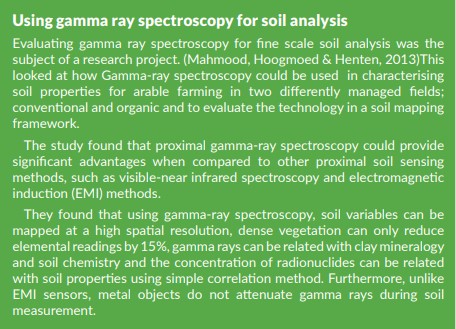
The results of the Terramap Carbon scanning showed up large differences in the carbon balance between the arable fields and permanent pasture, as you would expect. The average across the arable fields was about 30t/ha of organic carbon and it was almost double that for the permanent pasture. Having a baseline measurement means that Nick can look not just how to manage processes to build carbon on the arable fields up to the levels of that of the pasture, but also to prevent any unnecessary losses of carbon. For example looking at the impact of root crops on carbon or using cover cropping to prevent having any bare land over winter and reducing loss this way.
The carbon management tool allows users to look at these scenario’s using real and accurate measurements and then quantify the impact on carbon. After all as Lord Kelvin, physicist and engineer said: “When you cannot measure it, when you cannot express it in numbers, your knowledge is of a meagre and unsatisfactory kind.”
-
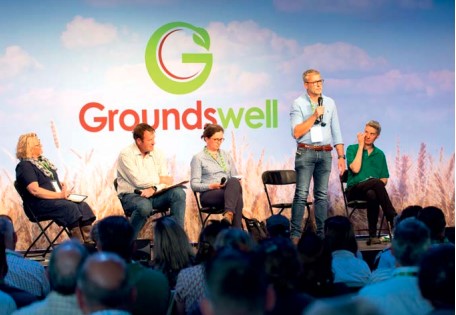
Inspiration, Innovation And Insight At Groundswell 2021
We weren’t quite sure how many people we could cram into the Groundswell site this year. We’d redesigned the layout, erected some large tents as lecture halls with double spaced seats to comply with covid restrictions and taken no end of advice from experts who all appeared to be making suggestions up on the spot. Then Boris pushed back ‘freedom day’ from the Monday of Groundswell week until some time in July. We thought what the hell, let’s just do it. We decided on a 3500 attendee limit, which we hit just before it started and that proved to be just about perfect.
Written by John Cherry

I’d love to tell you about all the hundred or so talks that were delivered, but as it was only physically possible for any one person to attend, at most, ten sessions over the two days, that isn’t going to happen. But we will eventually get them all up on the Groundswell YouTube channel ht t p s : // w w w.yo u t u b e . co m /c / GroundswellAgriculture . There is already some fascinating stuff on there: farmers telling their stories, soil experts explaining what goes on below ground, politicians sounding like they know what they are talking about, conversations about water, biodiversity, different strategies for building resilient farm businesses etc etc
What was more evident this year was the sheer joy that everyone there found in being able to actually talk to fellow enthusiasts, after being shut down on our own patches for eighteen months. Farming can be a lonely business, especially if you are doing something which your neighbours think is bonkers, so it is really lovely to chat to old and new friends while queueing for a cup of coffee or over a pint in the Earthworm Arms.
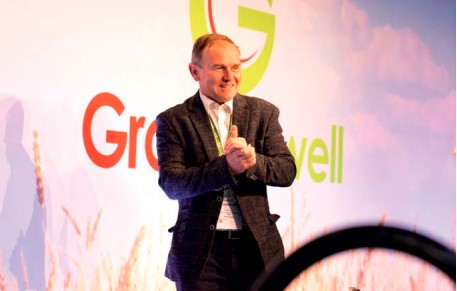
One particular side-effect of the covid business was that we couldn’t fly in any big name speakers from the USA or, indeed, anywhere abroad. This resulted in a pleasingly UKcentric event, albeit with a fairly fluid line-up as some speakers had to bow out at the last minute due to positive tests or whatever. It shows how much the atmosphere has changed since our first Groundswell six years ago, when we were advised that we’d better only put the show on every other year, otherwise we’d run out of speakers…we had 170 speakers this time and had to put several more on hold.
Meanwhile, out in the demo field we had a dozen different companies showing off their drills and all reported a lot of interest from farmers. It won’t surprise Direct Driller readers who will be well aware how big a saving there is to be made by avoiding tillage. Gary Markham’s benchmarking figures underlined how desperate the situation is for many, if not most, intensive cultivating operations, especially as BPS starts to be phased out. Decent wheat prices this year may delay financial meltdown for some, but we’ve all got to find cheaper ways of establishing our crops.

The price of some of this tackle may seem eye-watering, but it was great to hear George Renner, in his double act with Adam Driver, talk about using his 20 year old Dale drill and 30 year old tractor pulling it to sow most of his crops. ‘Work smarter, not harder’ was his message. There was, similarly, all sorts of tips available from all quarters about using Mother Nature as an ally rather than an enemy in our businesses. One of the funniest and most heart-warming sights was the exodus of delegates down to the cattle grazing field to take part in the dung-beetle safari, led by Sally-Ann Spence and Claire Whittle. Six years ago most farmers wouldn’t have cared whether they had any sort of beetle on the farm, the mood has changed so much now that it seems we are all actively encouraging these little ecosystem engineers, not least because they improve landscape health and thus animal health and ultimately human health.

Another highlight for me was listening to Colin Tudge (the founder of the Oxford Real Farming Conference) talking about his book The Great Rethink which challenged a lot of commonly held views about the best way to get ourselves out of the mess humanity is finding itself in. Good farming, you’ll be pleased to learn, is crucial to our salvation. I’m now reading the book…
There were indeed too many highlights to mention, the fascinating compost ladies, the wild bee man, Professor Karl Ritz’s pictures, Henry Driver’s art etc etc…basically lots of hope for the future. The loveliest thing we find in putting this show on though, is the feedback that we get from the attendees and it’s theirs (and your) enthusiasm that makes it all worthwhile.
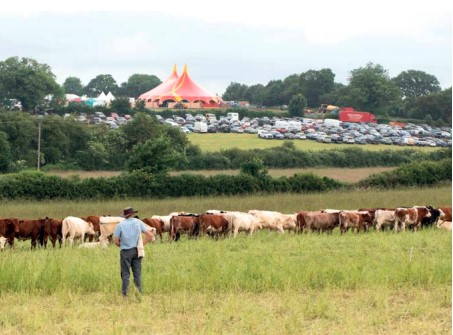
We’re already working on next year’s event, plan your holidays around it: 22/23rd June 2022. If you have an idea for a speaking session please get in touch, likewise we are open to any ideas which would make the event better or more entertaining or more useful.
Re-Watch Groundswell on YouTube
In the meantime, you can catch up on sessions you missed via the Groundswell YouTube channel. Follow the QR Code below to get to the channel and give it a like to be notified when further videos are added.

-

From ‘No Hope In Heck’ To Regenerative No-Tilling
In the drylands of Southwestern Australia Ian and Dianne Haggerty are using the concepts of “Natural Intelligence Farming” to build a regenerative enterprise focused on zero tillage, livestock integration and biologically sourced inputs that boost their soil resources and profitability. Ian and Dianne Haggerty are using the concepts of “Natural Intelligence Farming” to build a regenerative enterprise focused on zero tillage, livestock integration and biologically sourced inputs that boost their soil resources and profitability.
Written by John Dobberstein, No-Till Farmer Magazine, USA

Married and both raised in farming families, Ian and Dianne Haggerty were shocked when they sought advice from a farm advisor on managing their fledgling operation in the drylands of southwestern Australia. After looking at their farm size and financial capital, the advisor told them they should get out of farming because they didn’t have “a hope in heck” of surviving. “Fortunately, Ian and I are both pretty stubborn customers and we just took that as a bit of a challenge,” Dianne says, lamenting that her father was a successful conventional farmer. “We didn’t have any room for error, so we had to start to look at things in a different way. At that point in time, using better and different types of machinery wasn’t going to be the answer.”

Rather than internalizing the advisor’s stinging advice, Ian and Dianne researched biological farming methods and have pushed through early challenges to grow their operation and take excess costs and waste out of the system. The Haggertys now no-till cereal grains and multispecies hay or fodder crops and raise specially bred sheep for wool and premium-grade fat lambs. Over time, their 1,600-acre operation has grown to nearly 65,000 acres as they’ve patched together leases and shares and some purchases later on. They’ve actually covered close to 185,000 acres in the country’s central wheatbelt, many parcels having different terrains, soils and rainfall zones.
They describe their approach to notilling as “Natural Intelligence Farming” — which means harnessing dynamic, natural relationships that exist between all the organisms in the ecosystem and the environment itself — particularly the soil. “Really, it’s minimizing our interference as humans,” Dianne told attendees of the No-till on the Plains Winter Conference in early 2020. “We don’t have to actually have an answer all the time. We trust the natural processes and just do our best to enable them to occur.”
Starting from Nothing
Their two main farming bases are at Mollerin and at Wyalkatchem, where the original farm is located. Precipitation is fleeting: During the 1990s, Dianne says, it wasn’t unusual to see 12-13 inches of rain annually, but lately precipitation has been 20-30% lower, equating to 8-9 inches of rain per annum, and at times as low as 5-6 inches. The Haggertys started farming in 1994 although they didn’t inherit any land, which is unusual in western Australia. They didn’t have any money for machinery at that point, but were able to buy about 300 breeding ewes and a piece of land. They borrowed machinery from Dianne’s parents in exchange for Ian doing some seasonal work.

After years of conventional farming, the Haggertys realized their farm was vulnerable to dry seasons. Input costs were steadily increasing without increases in productivity, and even though soil tests showed their soil had adequate nutrient levels, tissue tests showed nutrients weren’t getting to the plants. Hardpans in their soils were also restricting root growth. There are other challenges as well: Saline Soils. Many fields have had salinity issues that have impacted crop and livestock production. Poor Policy. In the early days of farming, the Australian government encouraged the clearing of large tracts of land for farm production. “Unfortunately, that’s had a really severe impact on the whole ecosystem and environment in western Australia,” Dianne says.
Low Organic Matter. In some of the farms they’ve taken on, the Haggertys have found paddocks with no cover at all and very low organic matter — at times as low as 0.15%.
But those challenges, Dianne notes, have taught them to pay attention to how different soil types respond to different cropping approaches and how the livestock in particular respond. “We realized pretty quickly that we had to be fairly resilient, not only in our thinking but also in how we set up our farms so that we could try and overcome a lot of the risks and the challenges,” she says. So they started researching biologically based farming systems to increase their soil’s microbial population, nutrient availability and moisture-holding capacity.
They gained a sense of direction when soil health expert Elaine Ingham and health professional Arden Anderson visited Perth — about 150 miles from their farm — for a 4-day workshop. Ingham emphasized nutrient cycling and water-holding capacity and rebuilding soil structure. Anderson talked about producing the highest quality food possible to restore human health for people in their food chain. They also learned about free-choice mineral systems and livestock integration from south Australian consultant Jane Slattery.
“There are lots of minerals livestock could go and access at their own choice. It wasn’t all premixed and they could select what was needed from different paddocks as required,” Dianne explains.
“By doing that we’re able to stop drenching the animals and feeding any grain supplements to them, which has had a big impact. Free choice mineral supplements have not been required now since 2006, as epigenetic progress of self-replacing livestock, landscape management and microbiome development has enabled this.”
Making Changes
The Haggertys made a number of changes to their management that they believe contributed to economic and production success:
• Reducing Chemicals. One of biggest changes the Haggertys made was reducing their use of synthetic fertilizers and eliminating fungicides and insecticides. They turned to new technologies that allowed them to apply “worm juice” and compost extract as a way to fertilize crops and improve soil health.
In many cases crops between the two systems were similar but those fertilized with the all-natural products had different rhizosheath development.
• Integrating Livestock. Dianne says working with self-replacing livestock on the farm has made perhaps the most significant impact.
When grain is harvested, the stubble in their high-microbial environment provides nutritious grazing fodder for the sheep. The stubble is eventually trampled and broken down by fungi to add to the organic carbon in the soil. Sheep are shorn every 8 months and produce lambs at a rate between 90% and 150% per annum. By not using drenches or feeding grain to the animals and being able to provide a biodiverse food source for the diet, “the animals have been able to optimize their gut microbiome development and that has really contributed significantly to the farm progression,” Dianne says.

“What we’ve been able to rely upon is that innate wisdom of those animals, that they know when their health is at a good level. They are able to then smell out those nutrients and things that they require in different plants and also through their learned behavior, if those plants are available. This opportunity for diverse self-selection enables the sheep to optimize conditions in their rumen for appropriate microbiome function. “Of course, if I’ve got a restricted diet with only grass and clover or something, they have only got a couple of choices so there’s not a lot of opportunity. But if they’ve got access to natural bushland or a lot of different plants integrated throughout their paddocks, then they can do that good balancing on their own.”
• Cover Crops. The Haggertys are currently seeding 5,000-7,000 acres per year of cover crops for hay or fodder, mostly in the fall and mainly a mix of cereal grains and a few legumes. Dianne says summer native actives are self-generating over large areas and are bulked up with volunteer pastures.
About 26-30 different species are being used over each year and some of the covers are being grazed.
• Self-Replacing Livestock. Having selfreplacing livestock has been key as well. Research has shown that a lamb inside its mother’s uterus actually receives a lot of information and feeding preferences can be picked up by the lamb before it’s even born, Dianne says.
For example, if the mother’s been eating saltbush or something like that while it’s pregnant, when the lamb is born it can actually tolerate those foodstuffs a lot better than a lamb that wasn’t. “The lamb alongside its mother can learn what plants are most suitable to eat as well. That capacity of having that mother/baby unit for progression is really integral.”
Prior to reestablishing microbiome integrity in the sheep when they were still requiring drenching and receiving grain supplementation their manure piles were larger, but they’re now half to three-quarters the size with a more diverse feed source that includes native vegetation. Pasture quality is vastly more nutrient dense and diverse: it’s not uncommon to have brix levels in pasture plants at 15- 20 in winter and over 30 in early spring, she notes. And due to the higher-quality diet, the animals don’t have to graze as long or overeat to get what they need, meaning their energy requirements are lower, she says.
“Something else that we’ve noticed, even in our really hot, dry environments, is that over the winter/spring period the animals have become very water efficient,” Dianne says. “There’s been times in a winter and spring period where they haven’t gone to the water trough for 6 months. It shows that their digestive system is very water and food efficient.”
• Liquid Carbon. After working with Ingham in 2006, the Haggertys started with using vermi-liquid and composts in their farming system.
In the Ingham course, Dianne sat next to Rachelle Armstrong, whose father had set up a massive vermiculture farm and they sold a worm liquid concentrate which made it possible to make adoption of an injection system with the liquid a priority. They learned from Dr. Christine Jones the concept of providing a “liquid carbon pathway” so carbon could find its way deeper into the soil profile to help free up the soil’s productivity. Getting carbon established with residue mulch was proving tough due to the lack of rain and establishing ground cover.
“Christine talked a lot about the importance of that appropriate rhizosheath and that microbial bridge between the plant and the soil so that liquid carbon pathway could actually do something,” Dianne says.
They now use a combination of compost extract and worm liquid on foliar post-emergent following broadleaf herbicides if required, using 13 ounces an acre of worm liquid and up to 10 gallons an acre of compost extract. They also do use some plant foods with humics or fulvics at times, and may come back with a second foliar spray if there’s good yield potential, a higher rainfall year or some other restraint to plants identified. The liquids are not only applied at planting but as a foliar to assist crops with pushing roots into compacted acidic or saline soils. This is done, Dianne says, to boost microbial activity and micronutrient availability.
The Haggertys have a compost extractor from Midwest Biosystems on their farm that creates the liquid. It used to produce about 1,000 liters every 20 minutes, or 20,000 liters in a day, but they could only apply 1-2 gallons an acre. But in 2019, Ian built a 5,800-gallon tank that allows them to apply 1,000 liters in one pass. The tank has a large impeller inside and hoses on the bottom that pumps air through the liquid. The Haggertys own a 60-foot John Deere disc seeder, 50-foot Morris Industries C2 Contour drill with knife points and a 70-foot Morris Quantum air drill with knife points. Both styles are needed as they often take on new land each year with varying conditions.
When it comes time to seed wheat or barley with their air seeder, seed goes into one tank and a trailing liquid cart carries compost extract and worm liquid. They apply the worm liquid sparsely at about 0.5 gallons per hectare to keep costs to a minimum. They also use a boom spray for foliar applications, setting it up with a flood jet system so the extract is applied without restrictions. They were able to apply about 475,000 gallons of compost extract and worm liquid across the crops in 2019, at a rate of 7 gallons per acre at seeding time with the air seeder. In 2020, they applied 660,000 gallons, followed by a 10-gallon-per-acre foliar application post emergence.
The cost to acquire and apply the worm juice and compost extract is about $12 per acre. In ideal rainfall years, Dianne says, the farm is likely to have less crop production than highly fertilized crops, but in drier years — which are 8 out of 10 years — they can often have higher production outcomes and always high-quality grains with high hectoliter weight, good protein and low screenings.
• Retaining Seeds. “Epigenetic progression” is a key part of their farming practice, which includes selfreplacing livestock and retaining seeds every year. Because they are saving varieties, Dianne says they don’t have to chase different varieties that come out “because the seeds we retained ourselves are just improving all the time as they go along.”
Dianne illustrated the difference in pictures that showed the behavior of their wheat seed compared to the neighbor’s, seeded at the same time with the same amount of rainfall.
The photos indicate the Haggertys seed showed a different behavior, as it started developing a root system and engaging soil microbes before it even surfaced to start photosynthesizing. The neighbor’s seed did put on roots but was “really wanting to get out and start photosynthesizing as much as possible,” Dianne says.
“I guess, to me, it just means that our retained seed has got perhaps more energy in it to be able to do more work before it ever needed to start relying upon photosynthesis to recharge its system.”
• Fighting Compaction, Salinity. Compaction might not seem like a big problem in an arid, dry environment, but Dianne says it’s a “massive issue” that they’ve had to contend with on new farms they’ve taken on, along with acid soils.
Salinity is a problem particularly on land close to Lake Wallambin where salt picked up by wind is deposited on their land. They’ve planted lanes of saltbush and acacia in these areas. They use sheep to graze these areas and contribute to soil fertility through dung deposit. In the more saline areas they sometimes put out hay to attract the sheep and concentrate dung around the feeding point. Many Australian farmers are spending a lot of time and money applying gypsum or lime, or deep ripping on their land as a remedy, but Dianne says roots are able to deal with it without using mechanical systems.
She’s found that the root structure of wheat and oats, for example, are pushing through the acid subsoils and compacted layers. Tests of some new paddocks in the first year and 3-4 years later showed the soil had become five times less acidic without having to incur the considerable expense of applying lime. She notes some farmers 15-20 years ago were applying 1 ton per hectare but are now using 5-8 tons. This also translated into more carbon stored in the soil, Dianne says. As part of a national program to look at soil carbon changes around Australia, researchers tested the soil carbon to a meter and compared similar soil types under different management practices.
The researcher said he hadn’t seen any changes in carbon levels based on differing farm practices, only with different soil types. But after submitting samples, the Haggertys found they were still able to sequester — even with a continuous cereals rotation — a far greater level of carbon than their neighbor with the same soil type.
“What was really interesting was the carbon differences actually increased the deeper we went, so I really reflected what Christine had been saying about having a really good liquid carbon pathway,” Dianne says. “We had about 10 tons to the hectare extra carbon below these biologically managed crops, and there was actually more carbon under the crop than under a permanent pasture paddock, which you wouldn’t really expect.”
Tests also showed their soils were not only sequestering carbon but building nitrogen (N) stocks as well, as the associative N-fixing bacteria were doing their job. “Soil nitrogen levels in our continuous cereal program were higher than the neighbors’, which had included a legume phase in the previous two years. We’ve been able to grow crops with no nitrogen, phosphorus or potassium applied and that’s been happening for quite some time now.”
What is “Natural Intelligence Farming”?
It’s the term Ian and Dianne Haggerty use to describe the harnessing of the dynamic, natural relationships that exist between all the organisms in the ecosystem and the environment itself, particularly the soil. These relationships feature mutually beneficial interactions between the soil, plant seeds and roots, microorganisms, and the ruminants that feed on the plants and cycle manure and microbes back to the soil. Another definition coined for natural intelligence farming, Dianne says, is “integrating nature’s intuitive wisdom and biodiversity with food, fiber and beverage production.”
The key to natural intelligence farming is not to hinder or obstruct the interactions that support and inform these relationships. The Haggertys aim to facilitate natural intelligence with modern farming methods to create regenerative agricultural ecosystems that produce optimal food and fiber products.
MAKING IT WORK. A strategy of notill practices, livestock integration, cover crops and naturally sourced inputs has guided Ian and Dianne Haggerty as they’ve built a diversified 65,000- acre operation in southern Australia. Many parcels they have acquired were previously tilled and are located in different terrains, soils and rainfall zones.
NATURAL FIT. When seeding cereals, the Haggertys inject compost extract and worm liquid in one pass with the seed as a replacement for traditional fertilizers. Then they come back postemergence with a foliar spray of compost extract. Dianne says this setup seems to promote better production in drier years over conventional fertilizer, producing high-quality grains with good protein and low screenings.
COMING BACK. Ian and Dianne Haggerty say their dedication to no-till and “natural intelligence farming” has facilitated some major changes to their paddocks, including the return of native grasses, which provides a more diverse feedstock for their sheep.
DUAL PURPOSE LIVESTOCK. Sheep specifically bred for their wool, and premium-grade fat lambs, are key not only for the farm’s economic diversity, but for integration of microbes and nutrients throughout the Haggertys’ landscape, which spans tens of thousands of acres.
-

Drill Manufacturers In Focus…
INDEPENDENT CROP ESTABLISHMENT TRIALS YIELD EXCITING RESULTS

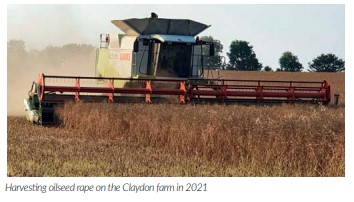
Suffolk farmer Jeff Claydon highlights the results of independent crop establishment trials and discusses the
progress of harvest on the Claydon farm.
26 AUGUST 2021In my last article for Direct Driller (Issue 14, July 2021) I promised to bring you some interesting information on the benefits of optimising crop establishment. Claydon have been assisting Agrii’s R&D Blackgrass Centre in Cambridgeshire with independent research into different establishment systems and some of you will have visited Rookery Farm, Stow Longa during the summer to see the work taking place. The trial site is on land owned by the Whitlock family, who have successfully used a Claydon drill to help them operate profitably for over a decade. Located on an old airfield near Huntingdon, it can be very wet and cold, providing ideal conditions for a range of grassweeds, from brome to blackgrass. Obtaining good, clean crops is a real challenge, but Martin Whitlock has proved that Claydon Opti-Till® is a major benefit in achieving that objective.
Agrii have carried out trials at Stow Longa since 2002, initially to investigate the effects of variables such as seedbed techniques, seed rates, drilling dates and varieties. However, in 2010 the researchers’ remit was expanded to include factors such as cultural control methods and the impact of establishment techniques. In May 2021, along with other members of the Claydon team, I went to see first-hand how establishment systems are evaluated. While we were there, Agrii Trials Manager Steve Corbett and Head of Agronomy Colin Lloyd emphasised the importance of operating a flexible farming system and a resilient method of establishment. They also stressed the critical role of soil health in achieving consistent crop performance and the need to make transitional changes between systems based on scientific evidence rather than ‘gut feel’. This, they stressed, is especially important when considering a low- or zerodisturbance system.

Even then, clear benefits in favour of the Claydon OptiTill® over conventional deep cultivation methods and a no-till approach were evident. These advantages continued through to harvest, so now we have the results of the Agrii team’s work to assess the performance of different systems in a high grassweed situation. Agrii evaluated a range of approaches, from no cultivations to the full Claydon Opti-Till® programme, including the use of the Claydon Straw Harrow, TerraStar light rotary cultivator and TerraBlade inter-row hoe in the spring to reduce blackgrass levels. The results are illuminating and with Agrii’s permission I am delighted to share them with you.
On the very heavy, sticky site the researchers found some surprising results, which are shown in Table 1. Even though a full chemical control programme was used across all trials it was very apparent that the lower the level of stubble management carried out, the higher the weed pressures were in the crop. Where no stubble management was done the yield was over 2t/ha less than where the full Claydon Opti-Till® System was used. At current wheat prices, around £210 per tonne, that represents potential lost income of over £420/ha.

Table 1: Agrii trial of Claydon Opti-Till® System at Stow
Longa, 2020-2021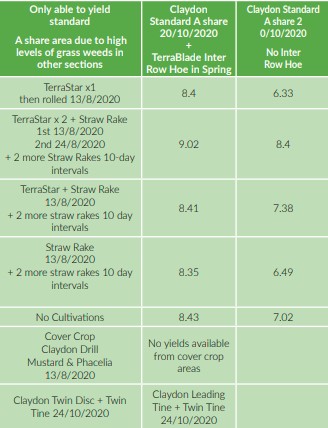
The full benefit of the Claydon Opti-Till® System can be seen where the Straw Harrow and TerraStar were used. The increased tilth and better soil-to-seed contact which resulted also helped the Claydon TerraBlade to do an exceptional job in the spring, as can be seen clearly from the results. They also show that the TerraBlade is exceptionally effective in reducing the number and yield-sapping effect of weeds between the band-sown rows. It produced an additional 1.4t/ ha yield advantage (9.02 t/ha v 8.4 t/ha) through enhanced grassweed control, which underlines the value of this very effective, low-cost method of supporting existing ag-chem programmes.
Even where a full stubble management system was used, including two passes with the TerraStar, fuel use with the OptiTill® System was still under 20 litres/ha, less than 20 per cent of a conventional crop establishment system, which helps to minimise carbon emissions. We would like to thank Colin Lloyd, Steve Corbett and all the Agrii team for their input on this valuable work.
Oilseed rape returns
In the July issue of Direct Driller, I mentioned the excellent progress of oilseed rape being grown on the Claydon farm this season, a crop we had to stop growing for three years because of damage caused by cabbage stem flea beetle. For the 2021 harvest we drilled four varieties, LG Aspire, an exceptional conventional rape, together with three hybrids, DK Exstar, DK Excited and DK Extremus, the latter two having TuYV resistance, a major consideration given its increasing prevalence. All were sown at the same time and received the same inputs.
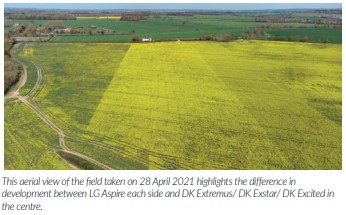
The photograph shows how much stronger the hybrids looked compared with the conventional variety in April and throughout the season they showed greater vigour. In contrast, the conventional variety was slow growing and suffered from frost damage, reducing yield in those areas. Surprisingly, however, at harvest when we compared weighbridge yields from adjoining strips in the field, all had achieved virtually the same yields (Table 2).
Table 2: Comparison of yields from different oilseed rape
varieties.
Evidently, the LG Aspire came back in the race and ultimately performed extremely well, although we still feel that hybrids are stronger and will deliver better performance in adverse areas or conditions. All varieties suffered some damage from cabbage stem flea beetle, but with oilseed rape prices at high levels they will provide very good returns.
A stop-start harvest
This has been a stop-start harvest, with measurable rain for eight consecutive days from 15th to 23rd August. Fortunately, the preceding hot, dry weather allowed us to work very long hours and combine until early in the morning. From 8pm on Friday 13 until 10pm on Sunday 15th August we harvested 1150 tonnes of wheat from 300 acres, including all 250 acres of winter wheat where we wanted to drill this season’s oilseed rape. We finished just as it started to rain on the Sunday evening.
The following day, 16th August, we started drilling DK Excited oilseed rape at a very low seed rate, just 2.7kg/ha, into the chopped straw and stubble with our 6m Claydon Drill. Although 5mm of rain stopped play on the Tuesday, we completed the balance by the close of play on Wednesday. The first cotyledons poked through the surface five days later and we applied 4kg/ha of Ironmax® Pro (De Sangosse) slug pellets to deter any slugs that were undoubtedly there due to the moist soil conditions.
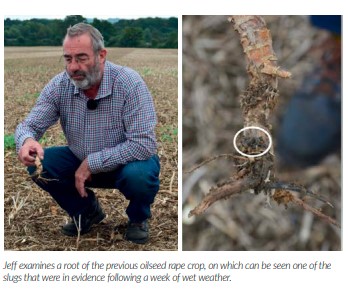

Dealing with slugs and slug eggs effectively is key to success with the following crop of winter wheat, so after harvest I regularly check fields when the soil is damp to see what is about. If you clear away residue that hasn’t been moved for several days both slugs and slug eggs will be evident. In the early days of the Claydon System we had big problems with slugs if we simply ignored them and didn’t do any stubble management, so that quickly became a cornerstone of postharvest operations on the Claydon farm. We can’t use slug pellets like we used to, and even though the new iron-type pellets are effective we don’t want to rely on chemicals, so the aim is to take out as many slugs and slug eggs as possible using cultural and mechanical methods.
The cold, dry April made for a tough start to spring and delayed growth, but all our crops looked very promising from then on. We could have done with warmer, sunnier weather in June to help fulfil that early promise, but that was not forthcoming and restricted yield potential, so this harvest is merely average rather than spectacular as we had hoped.
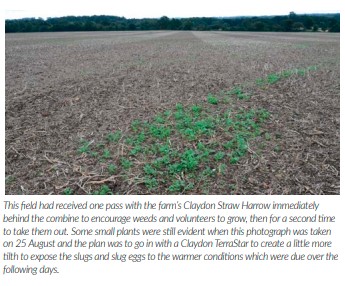
The weather is forecast fine for the next few days, so hopefully we will be able to crack on with combining and stubble management to get back on track. I’ll tell you how our wheat and spring oats performed in the next issue of Direct Driller, along with details of what impact, if any, cover crops had on spring oat yields.